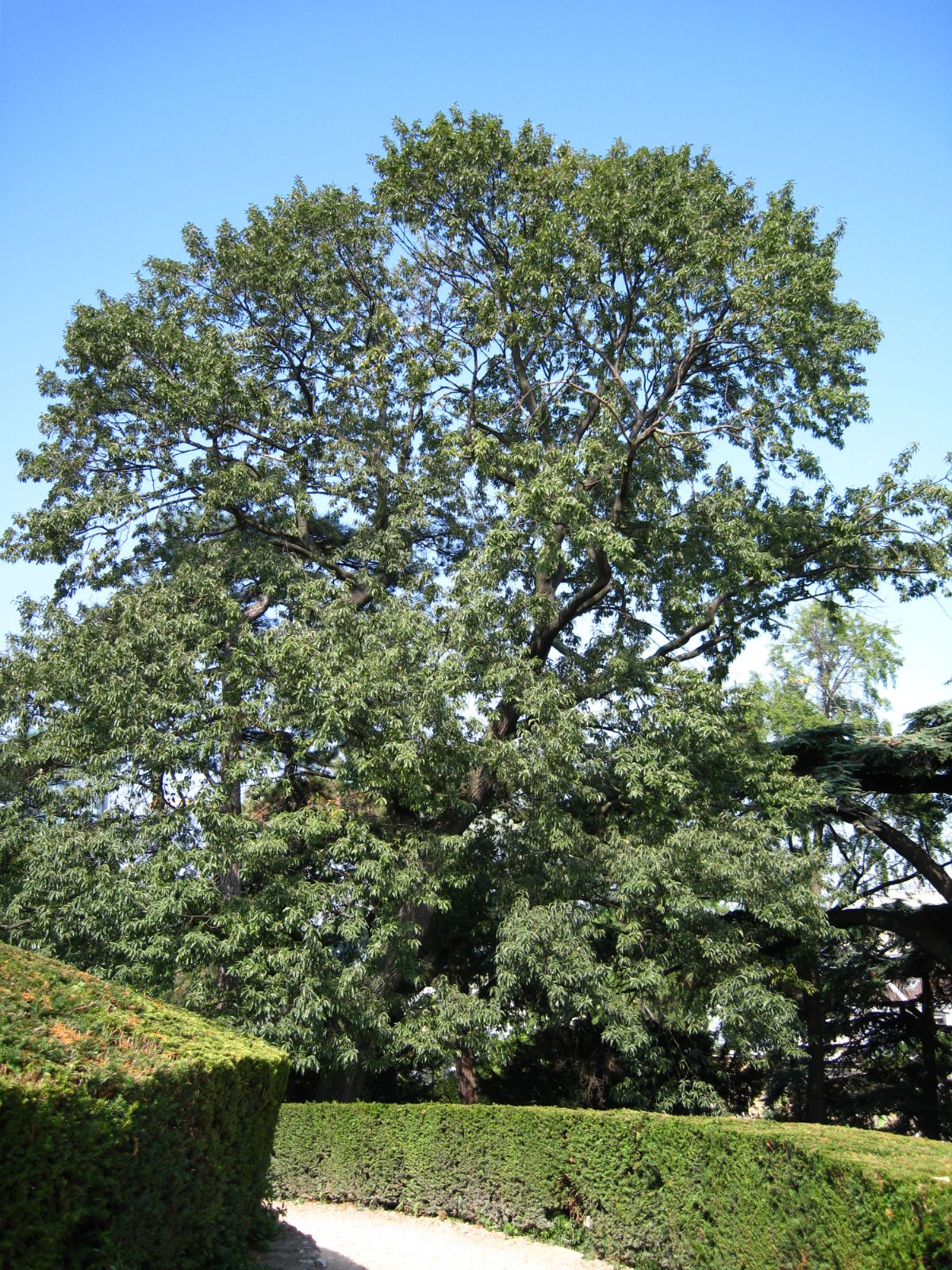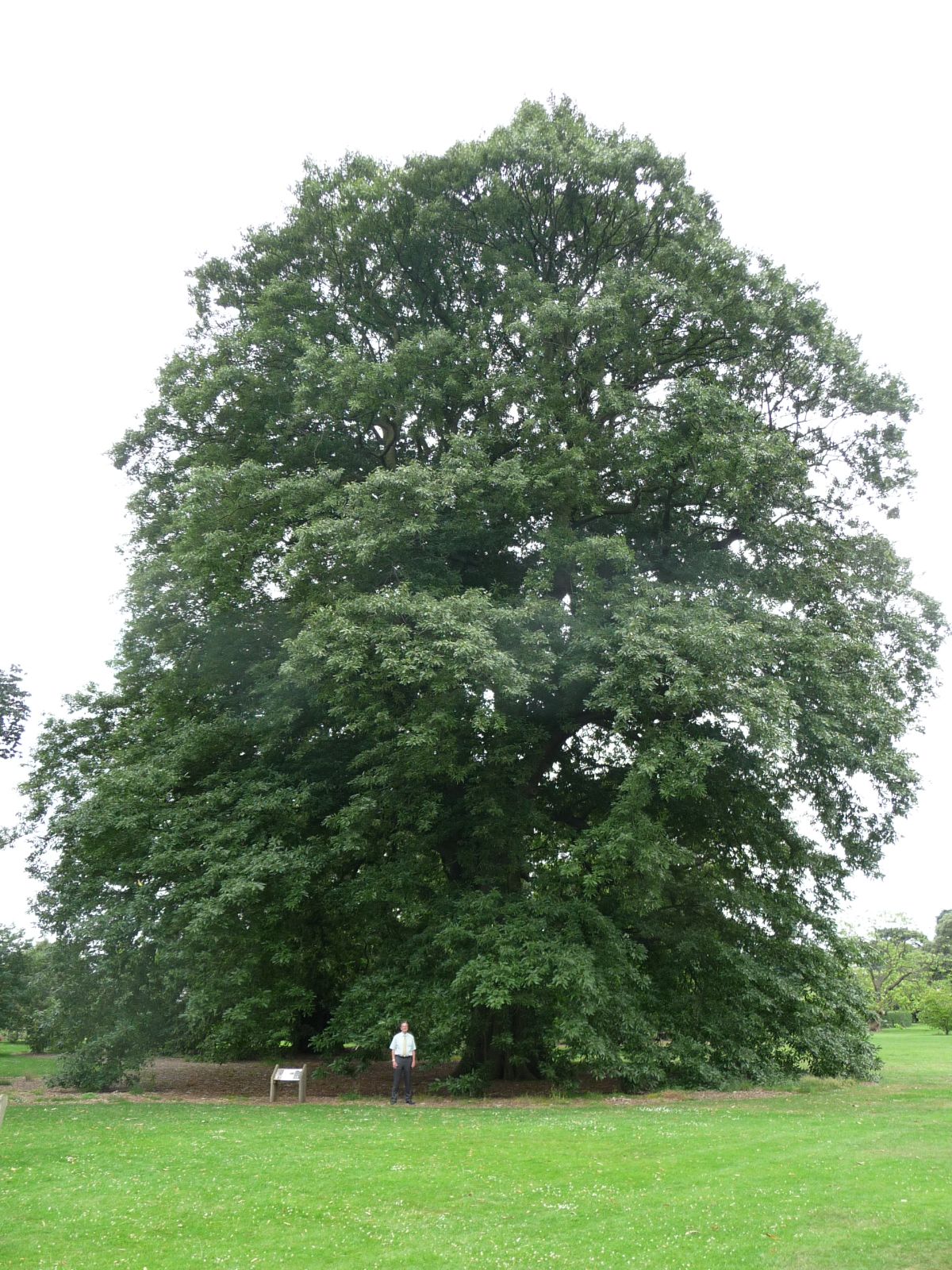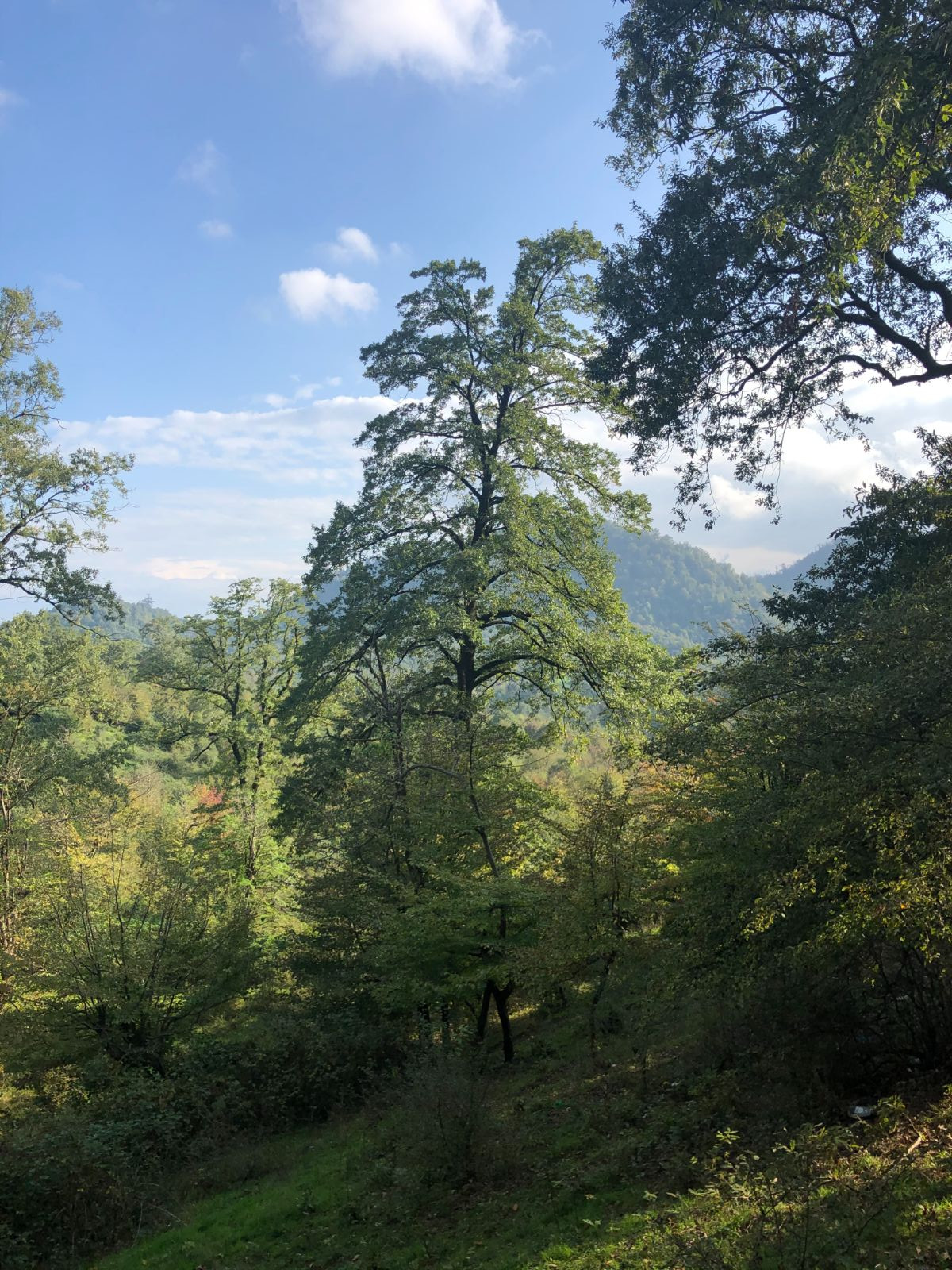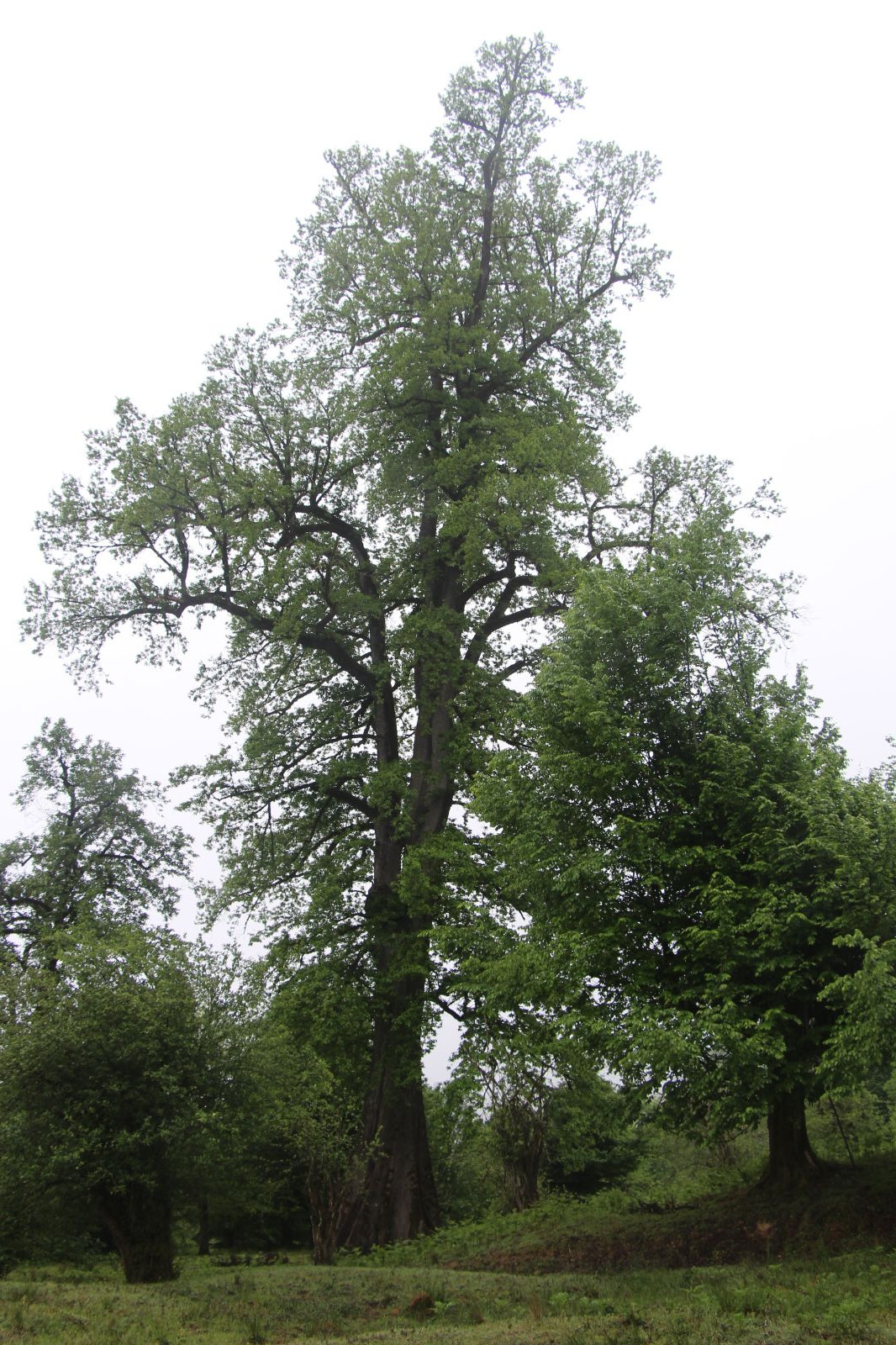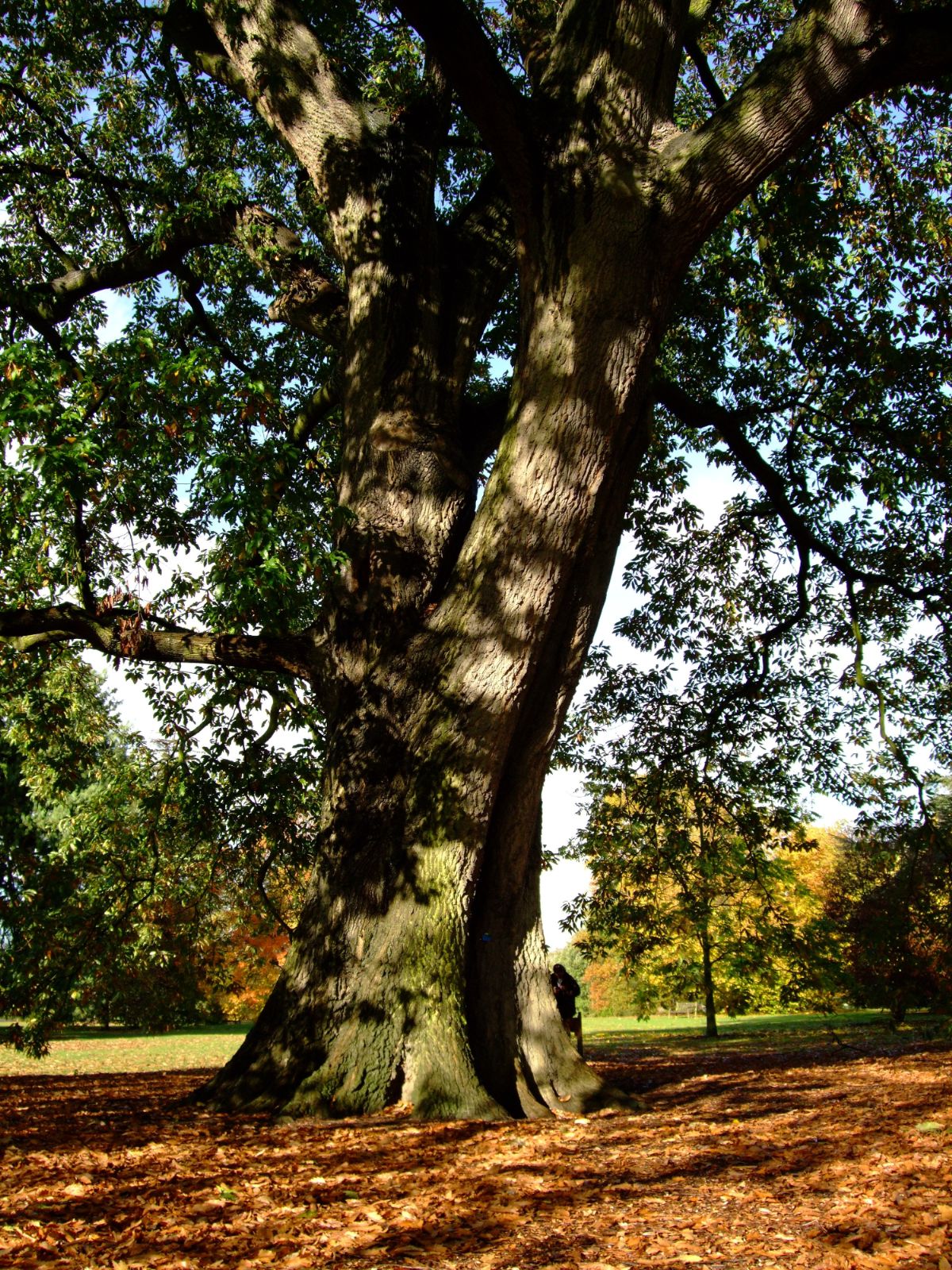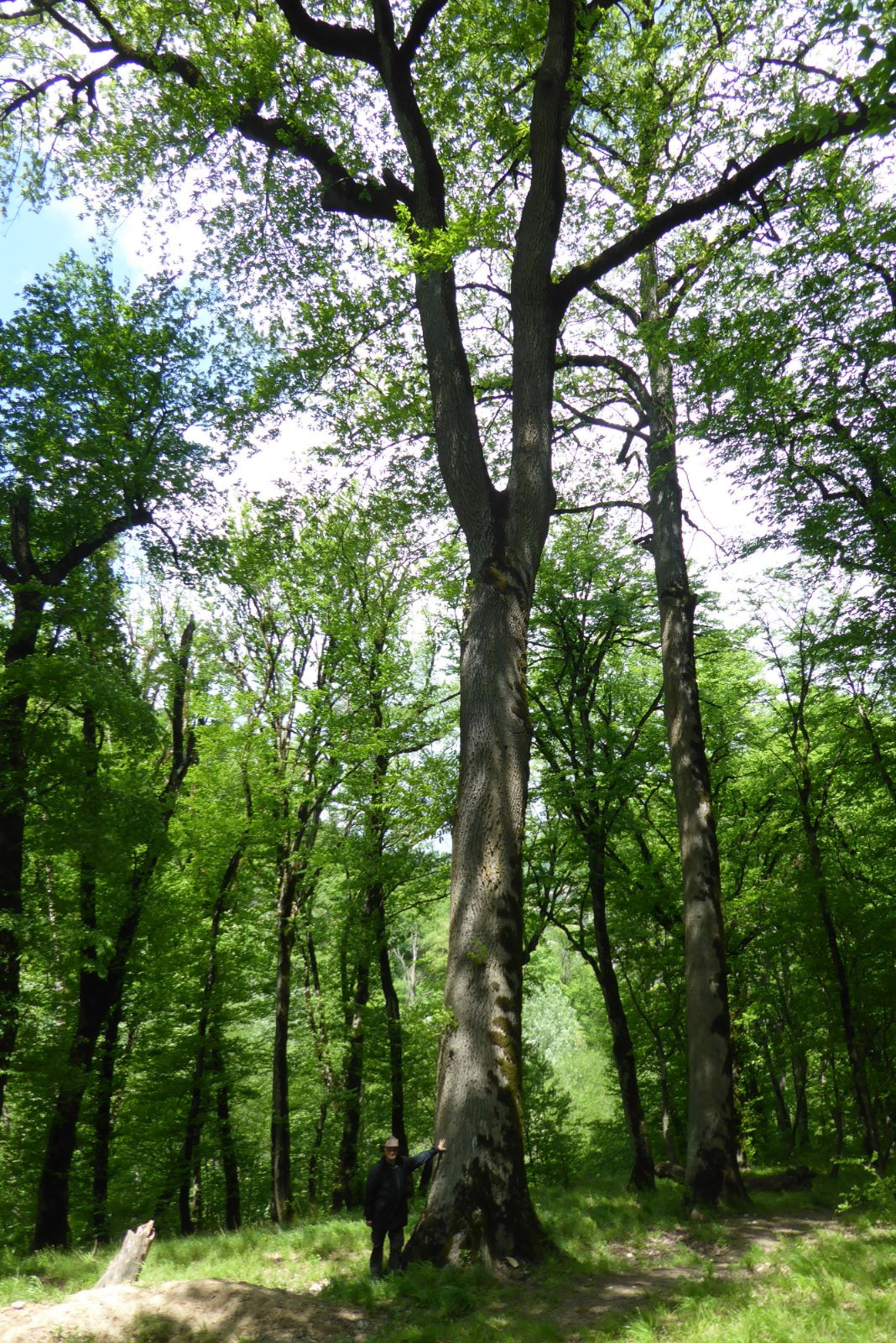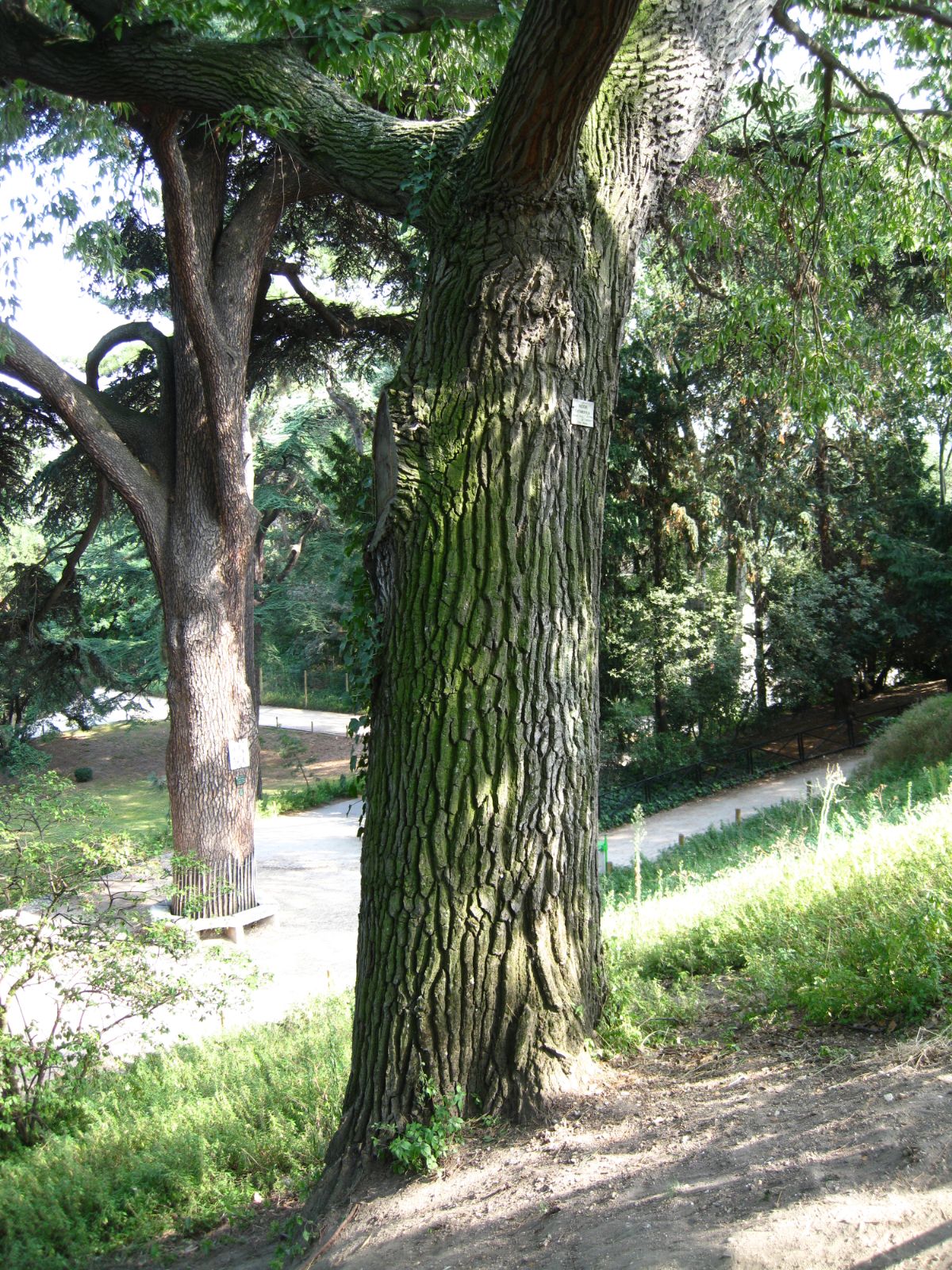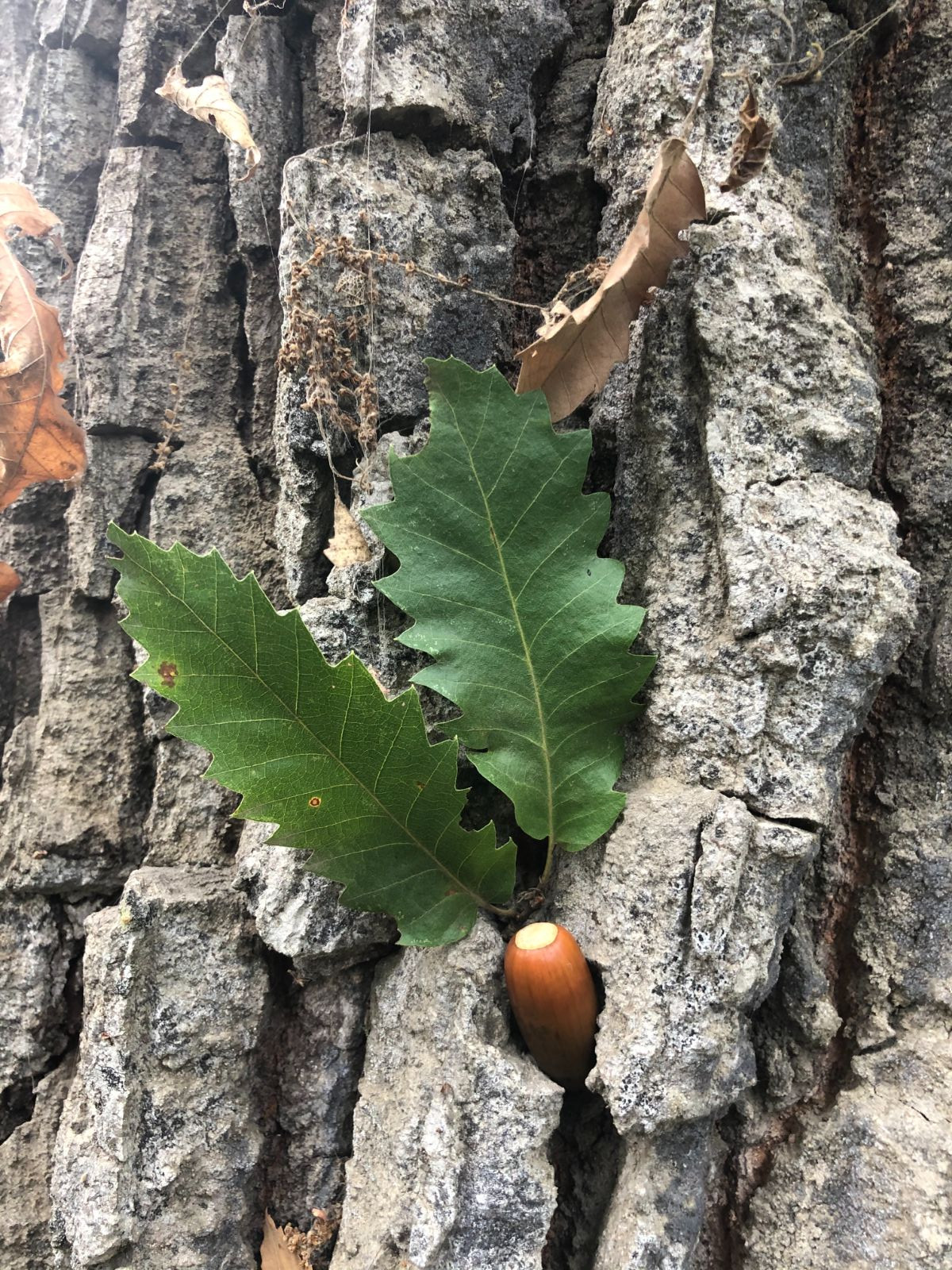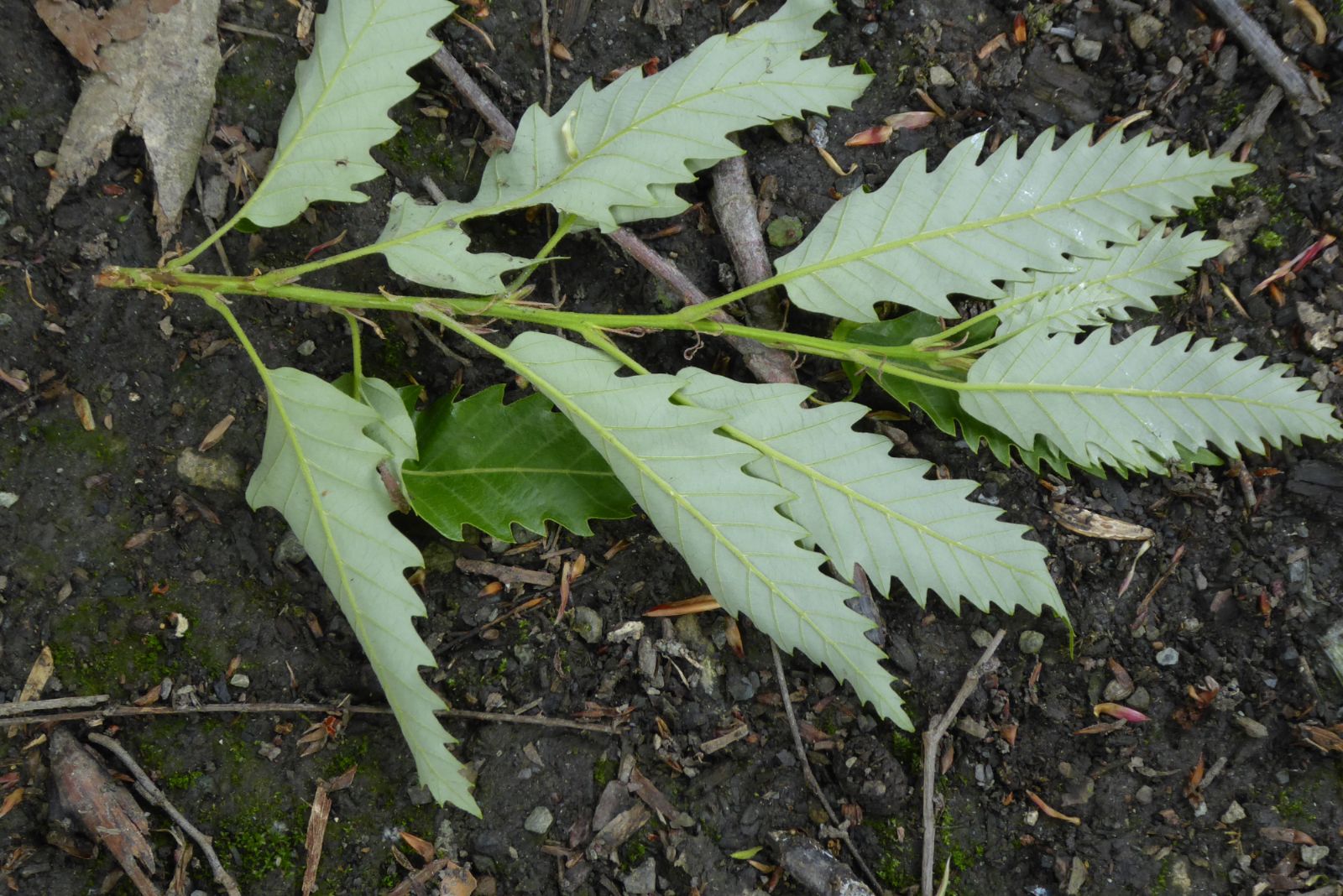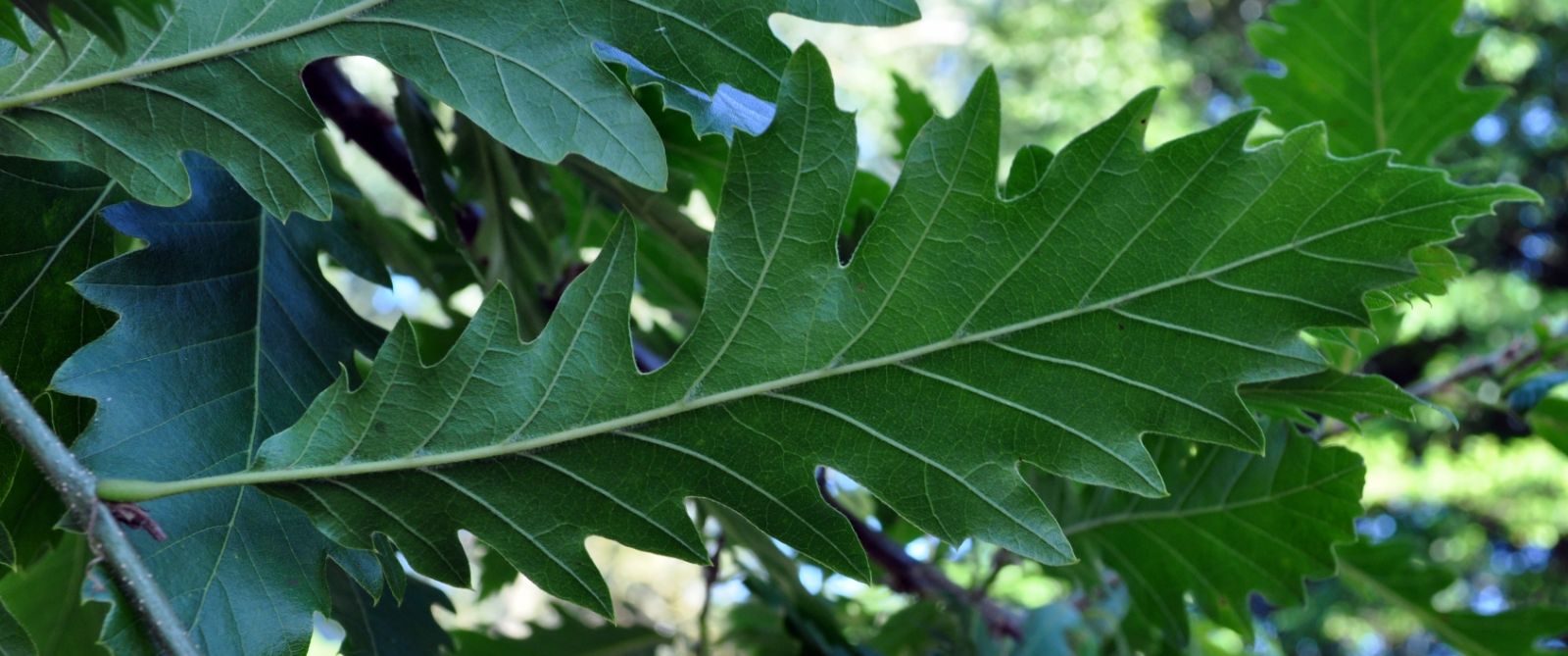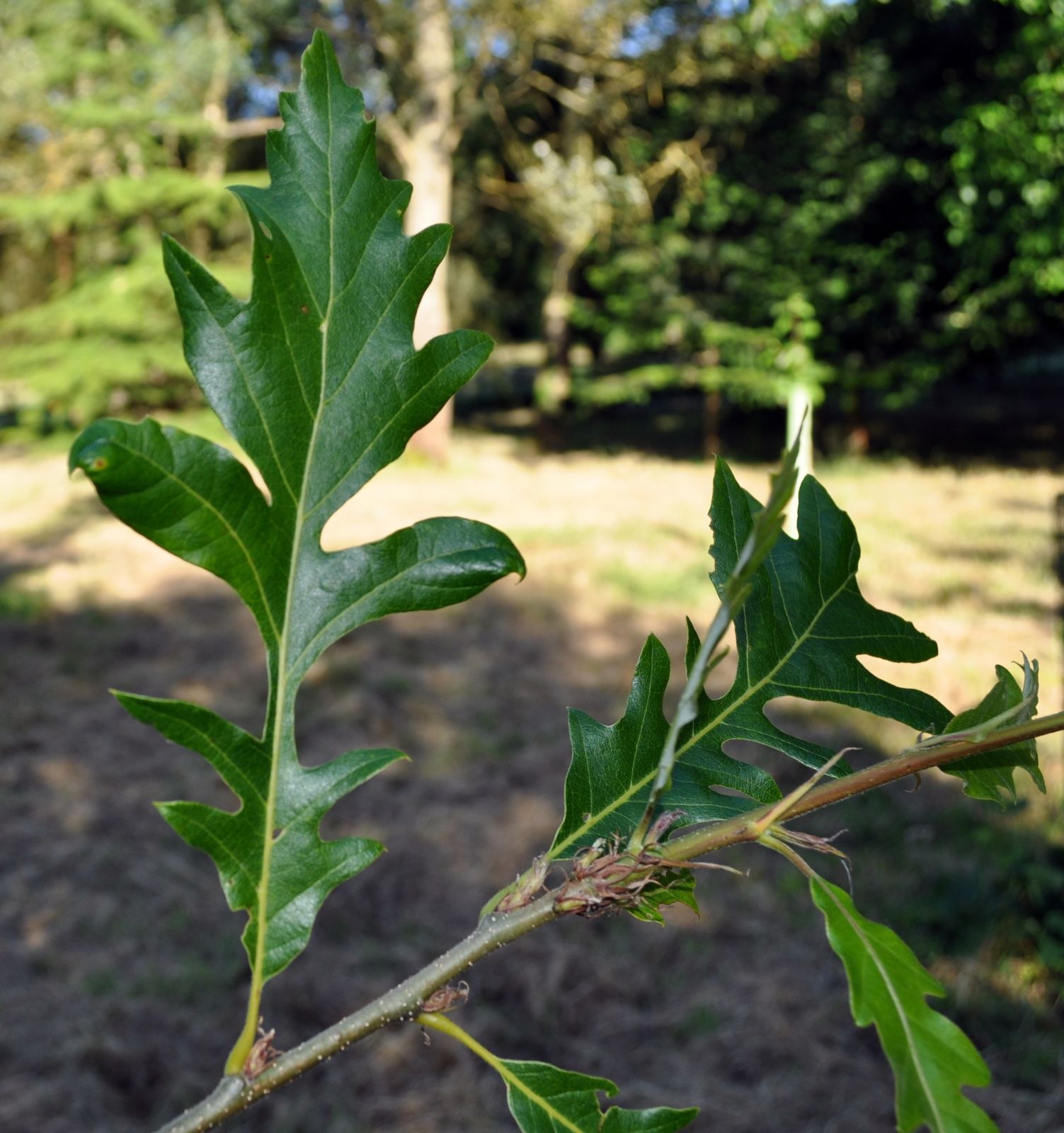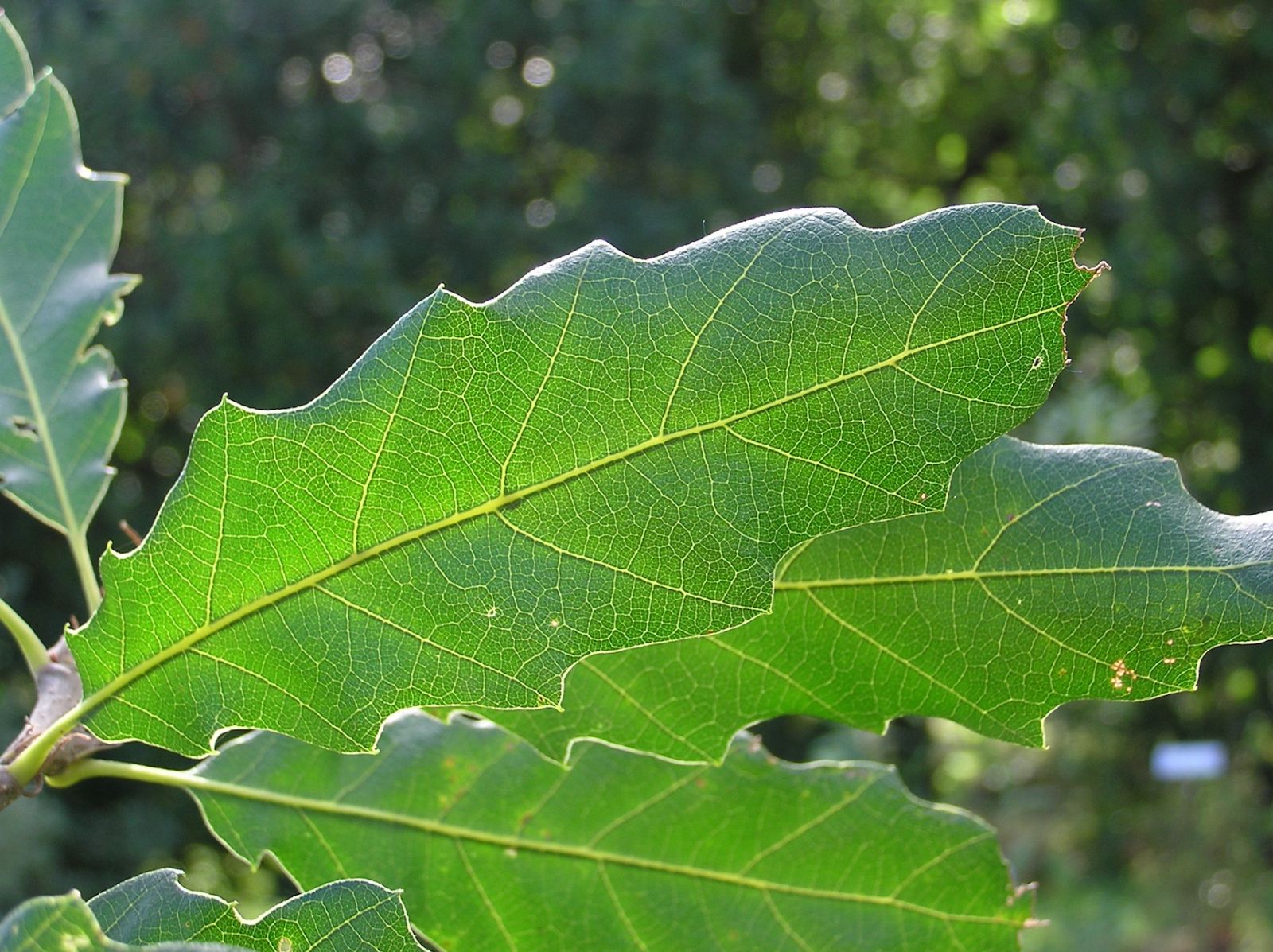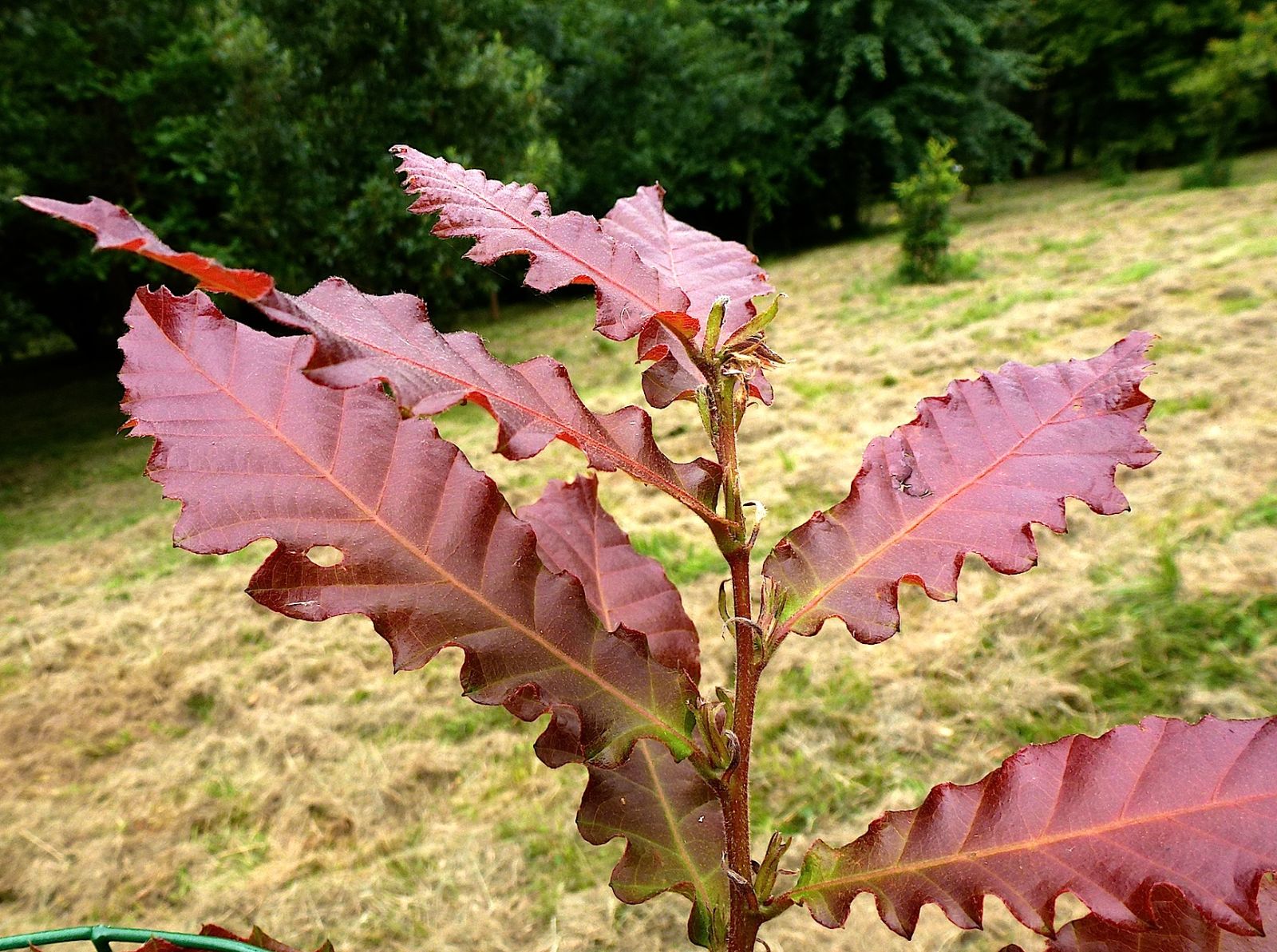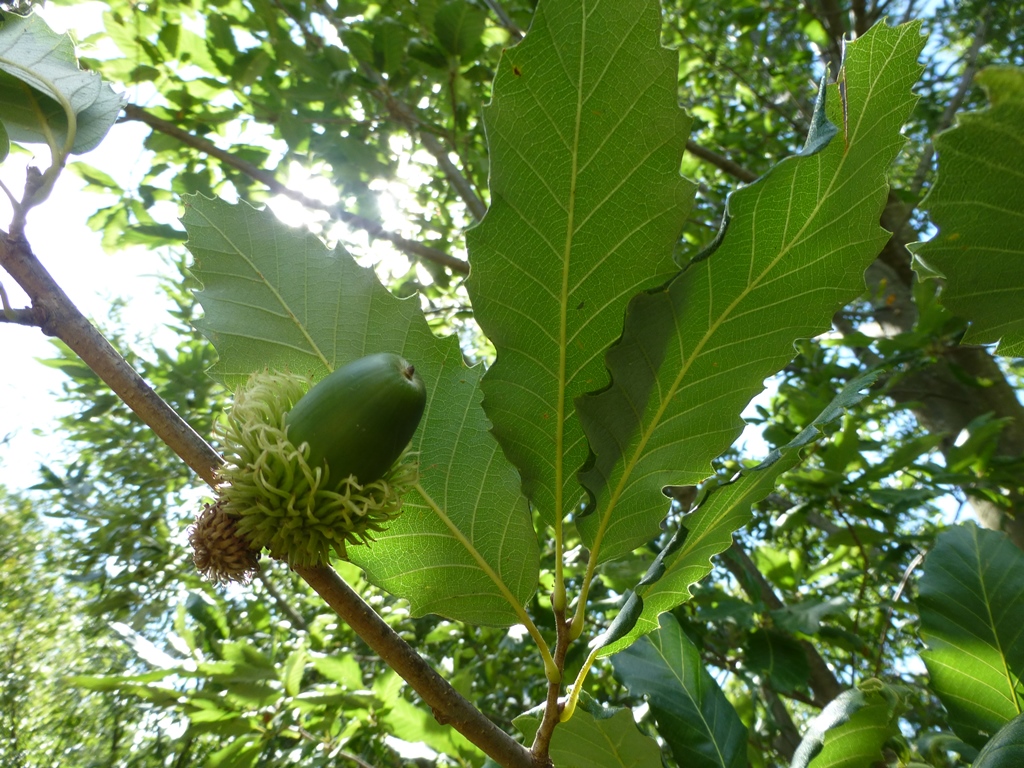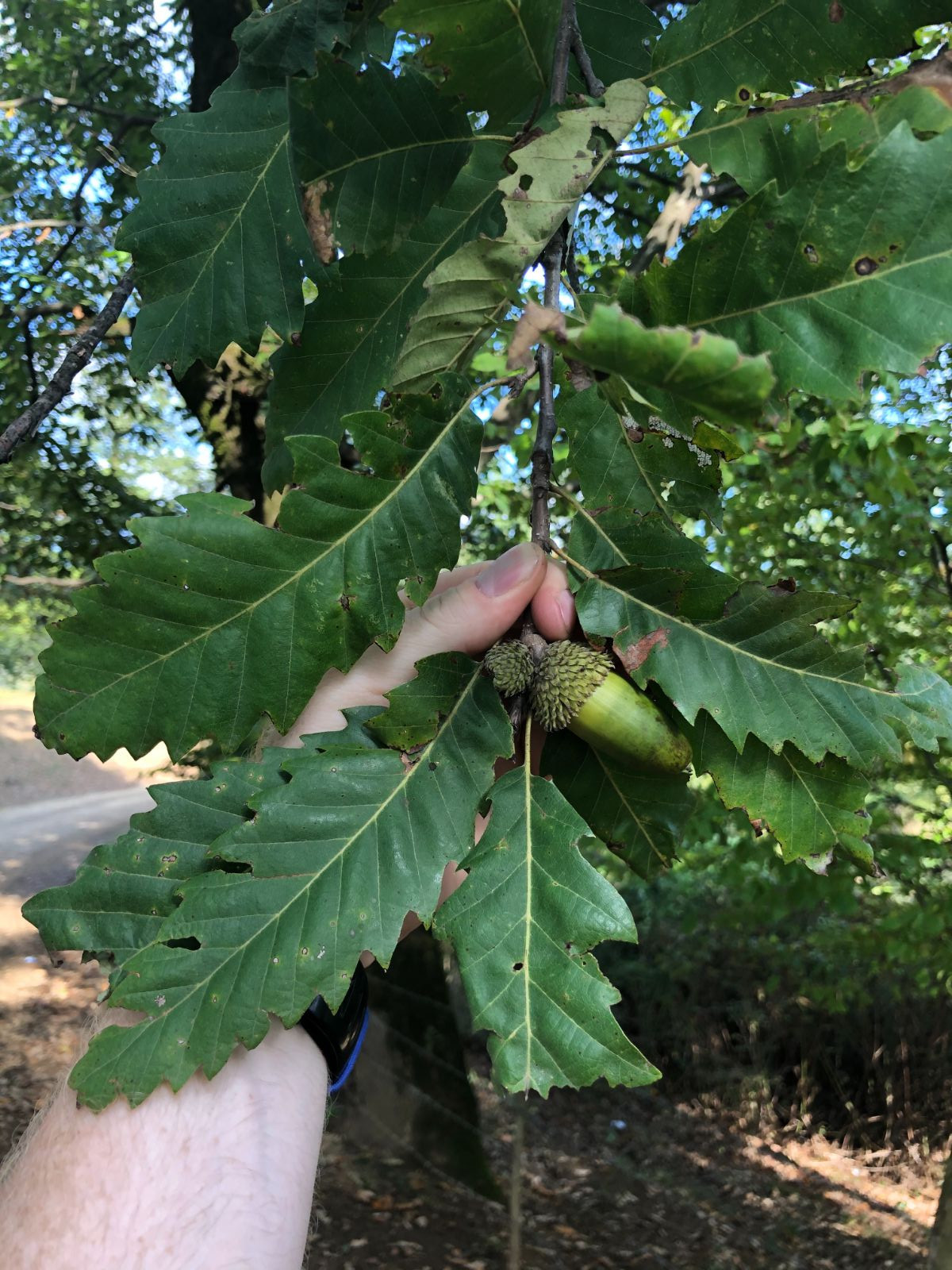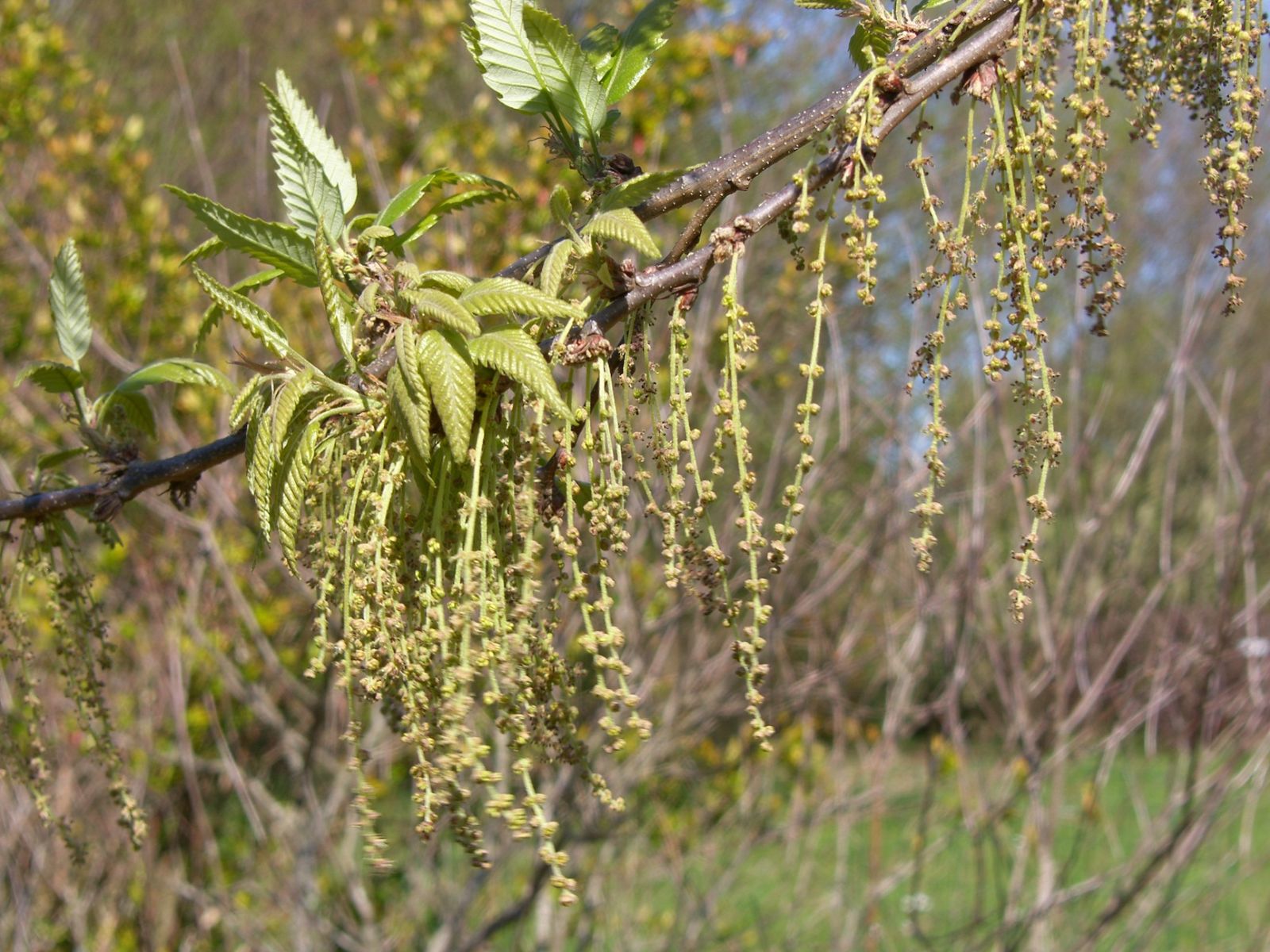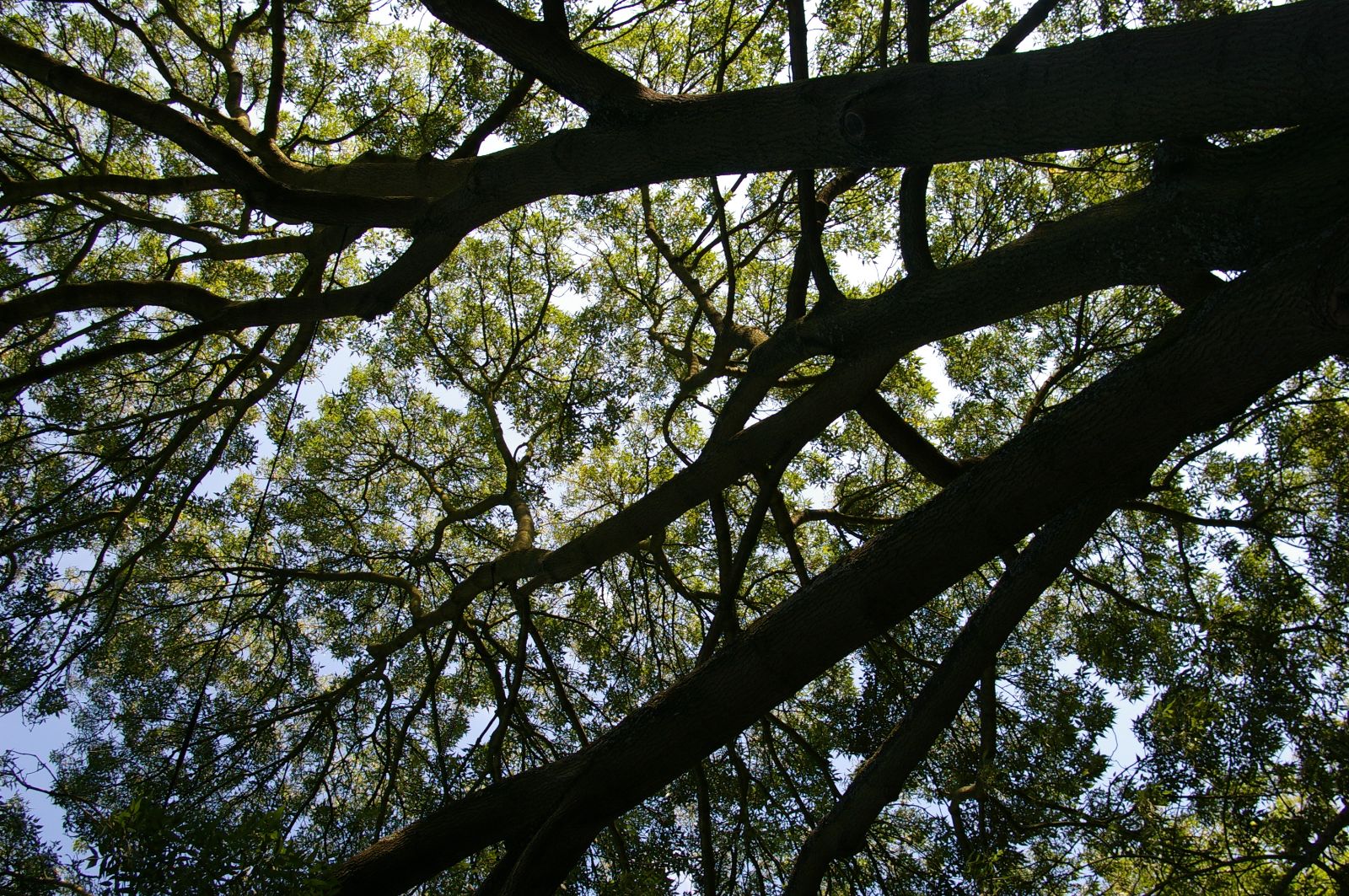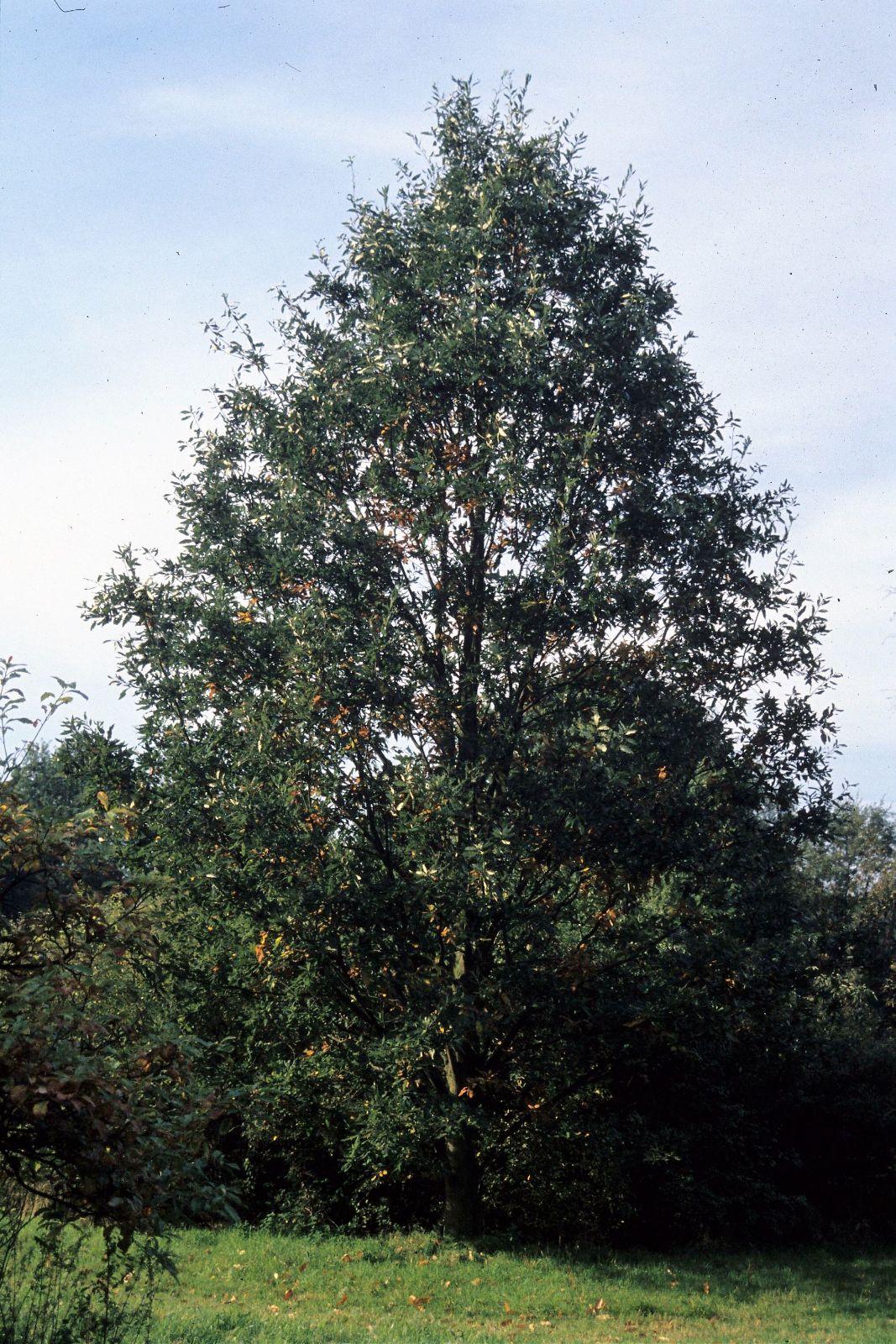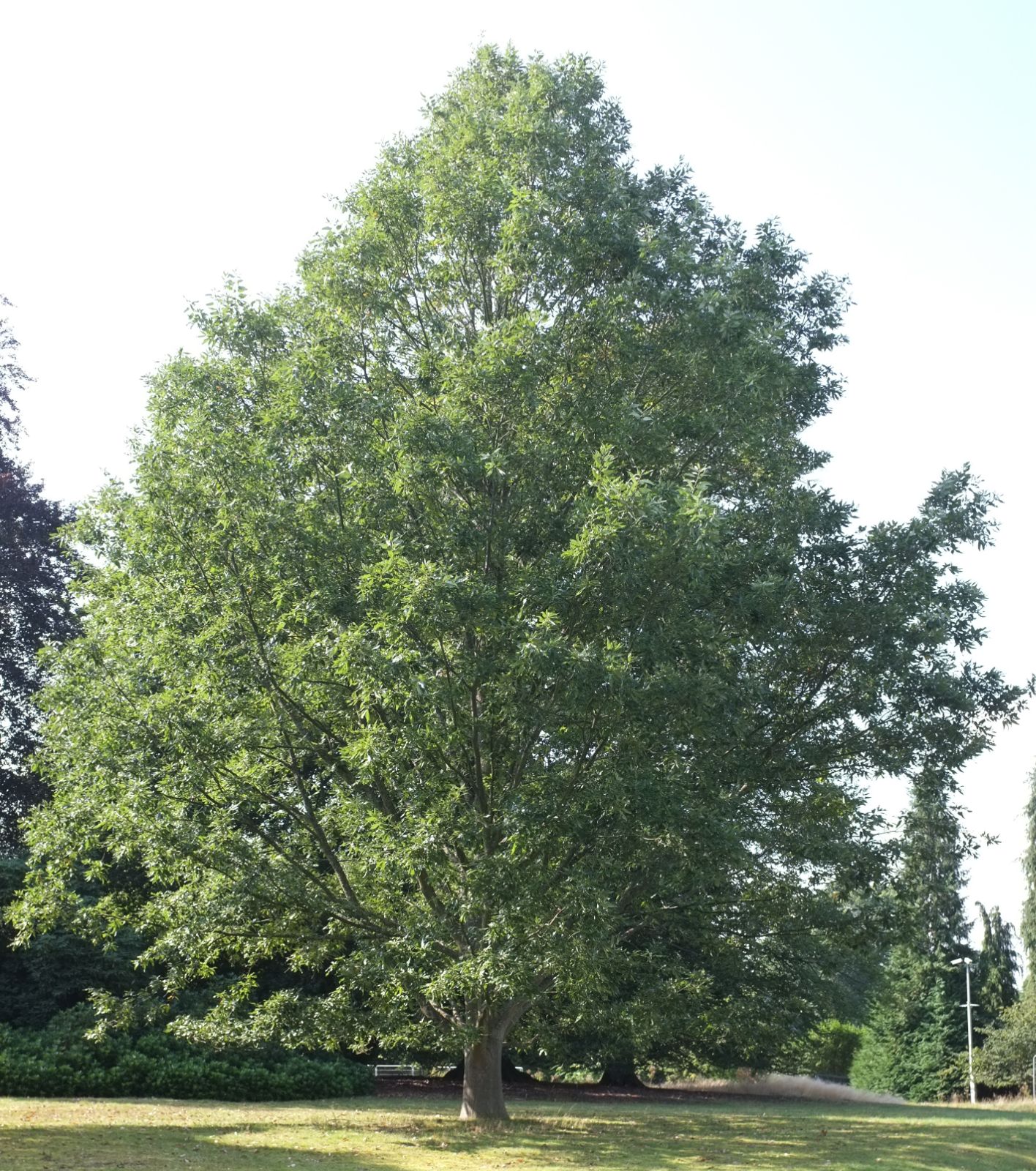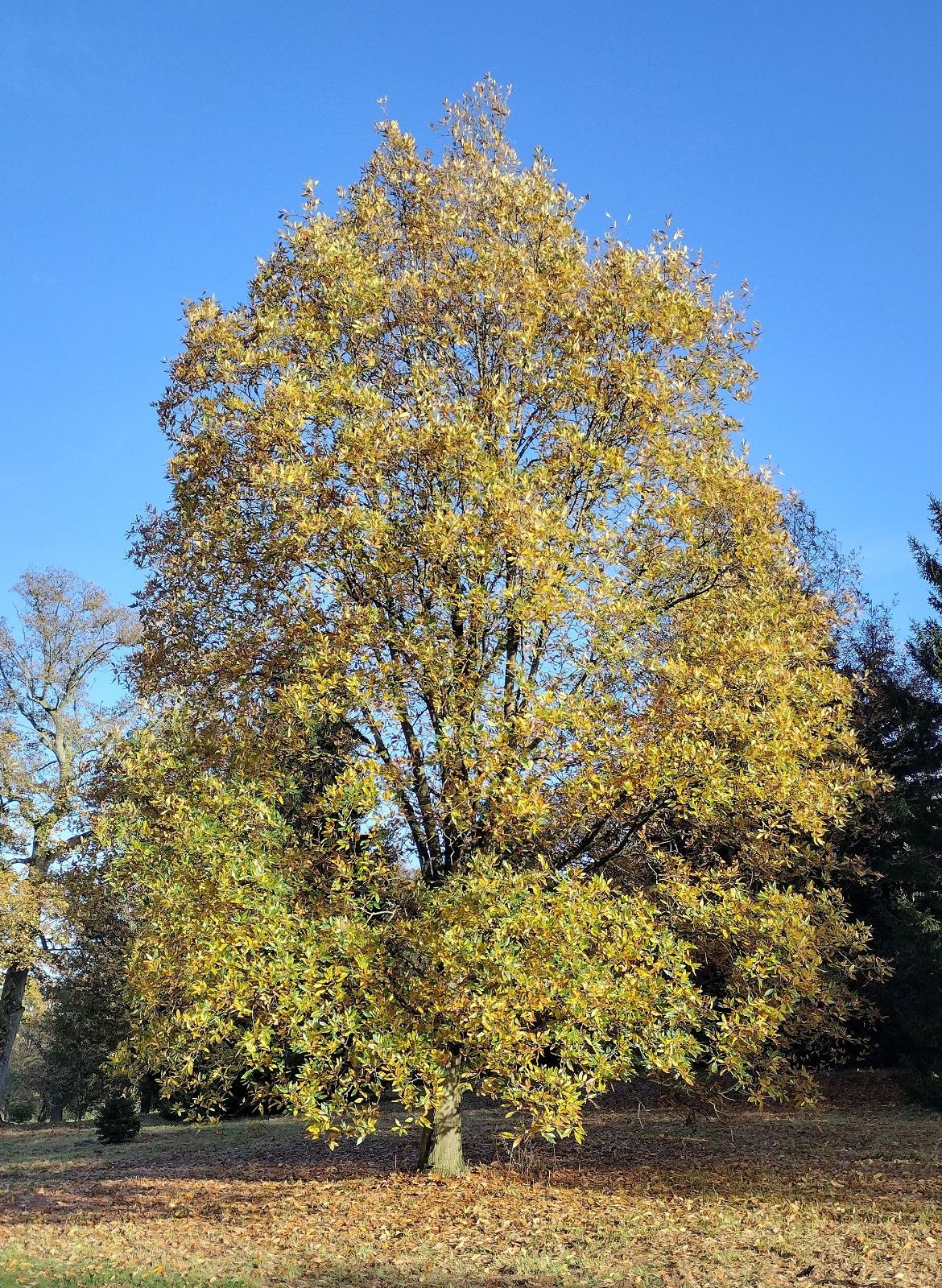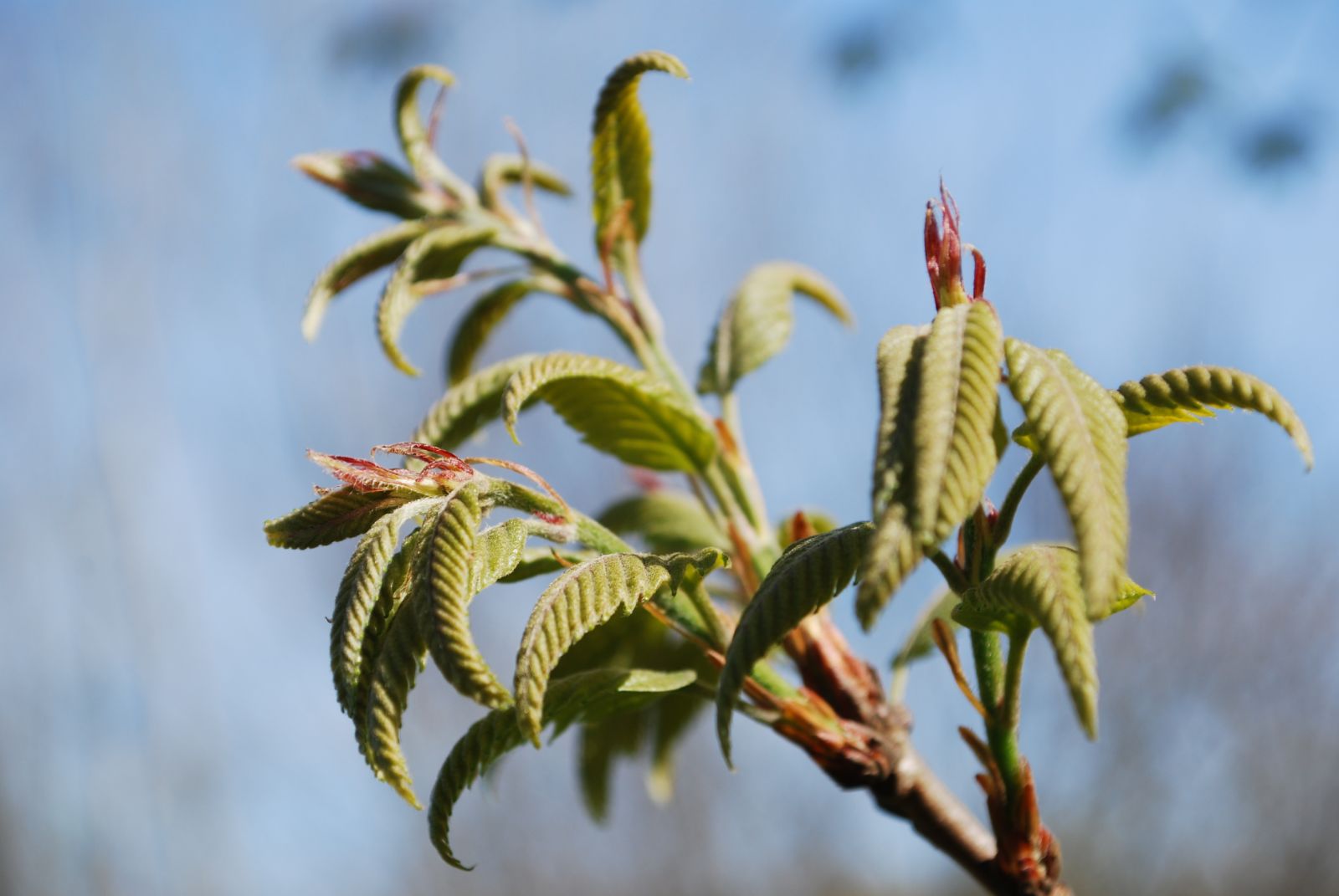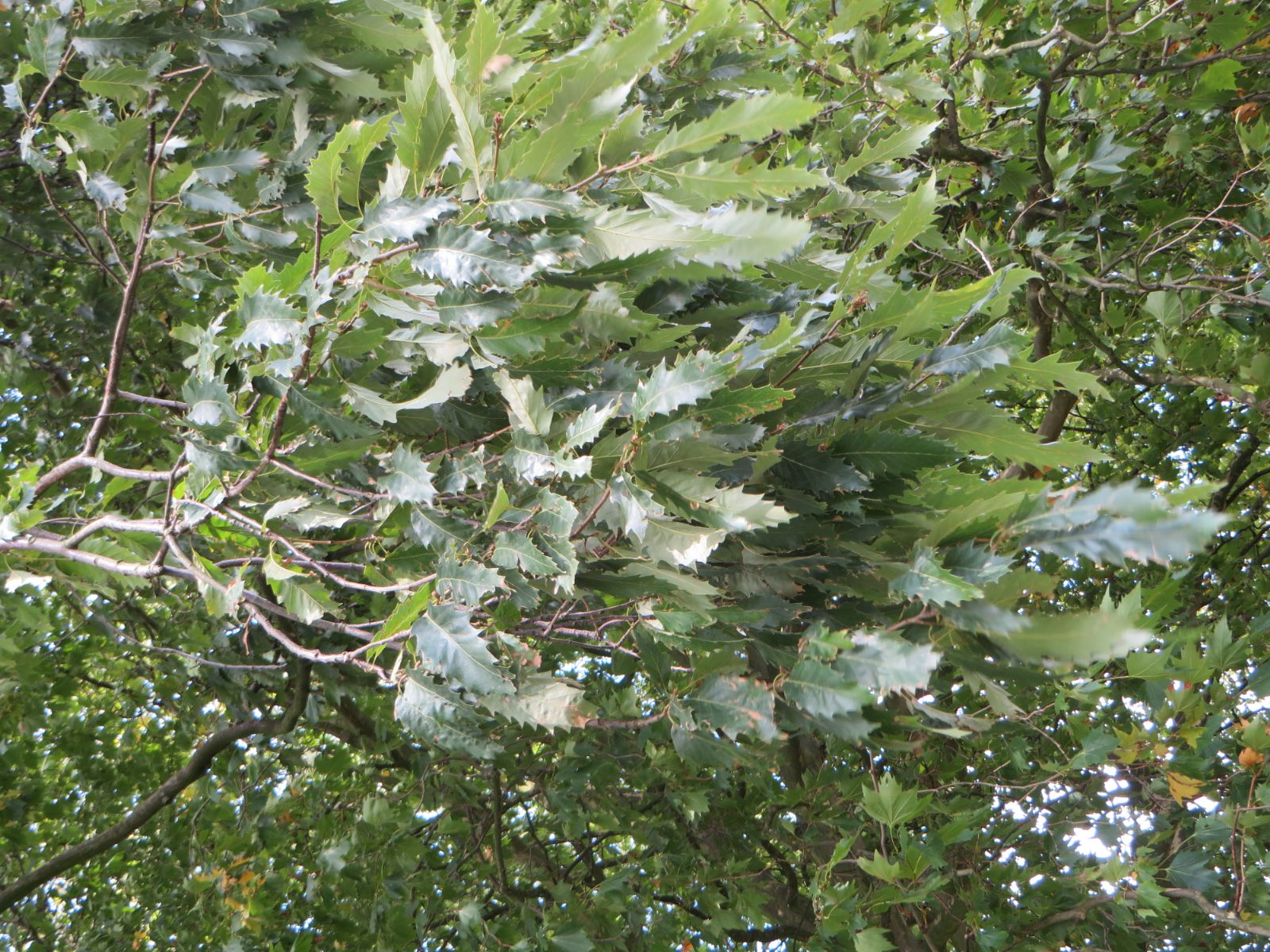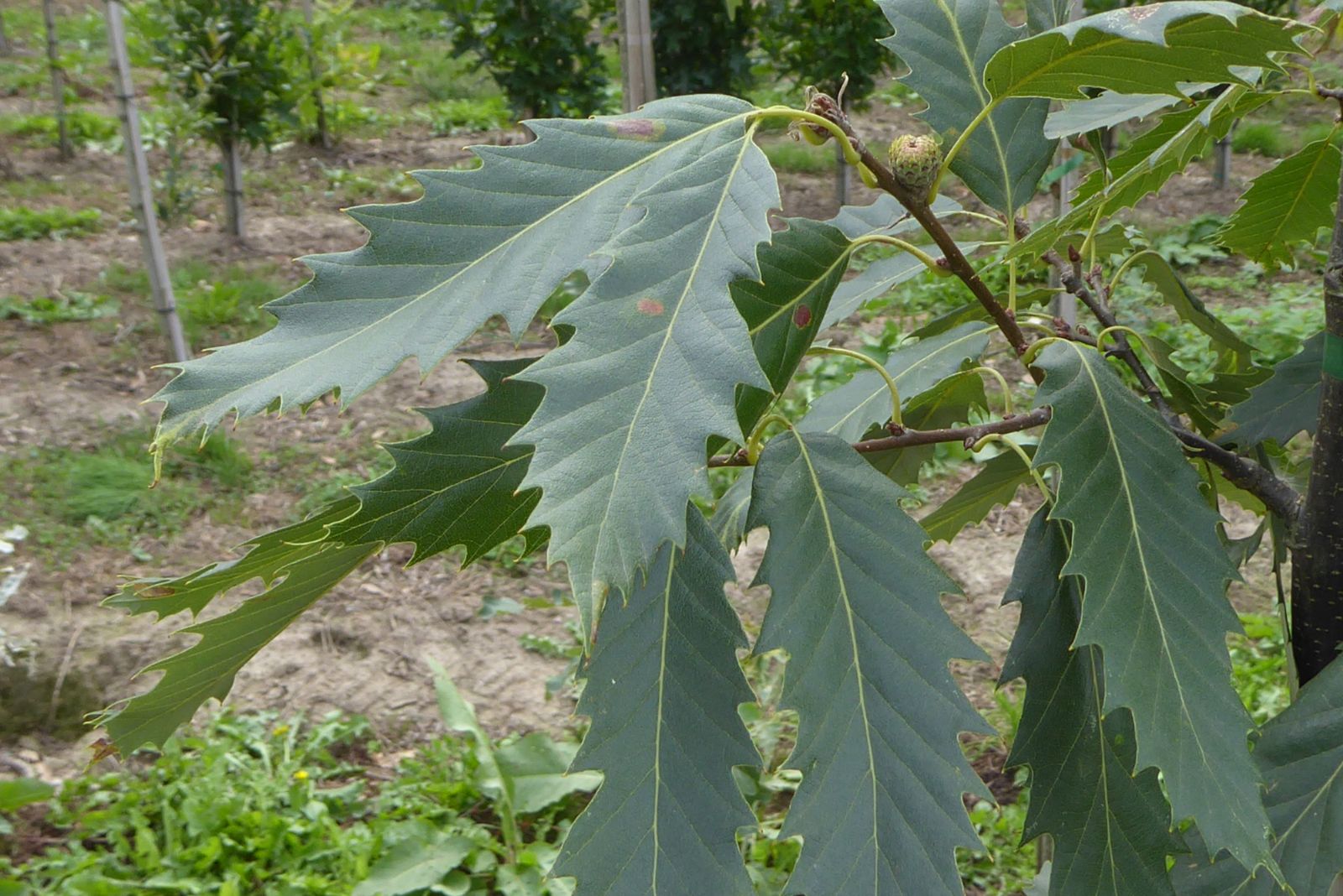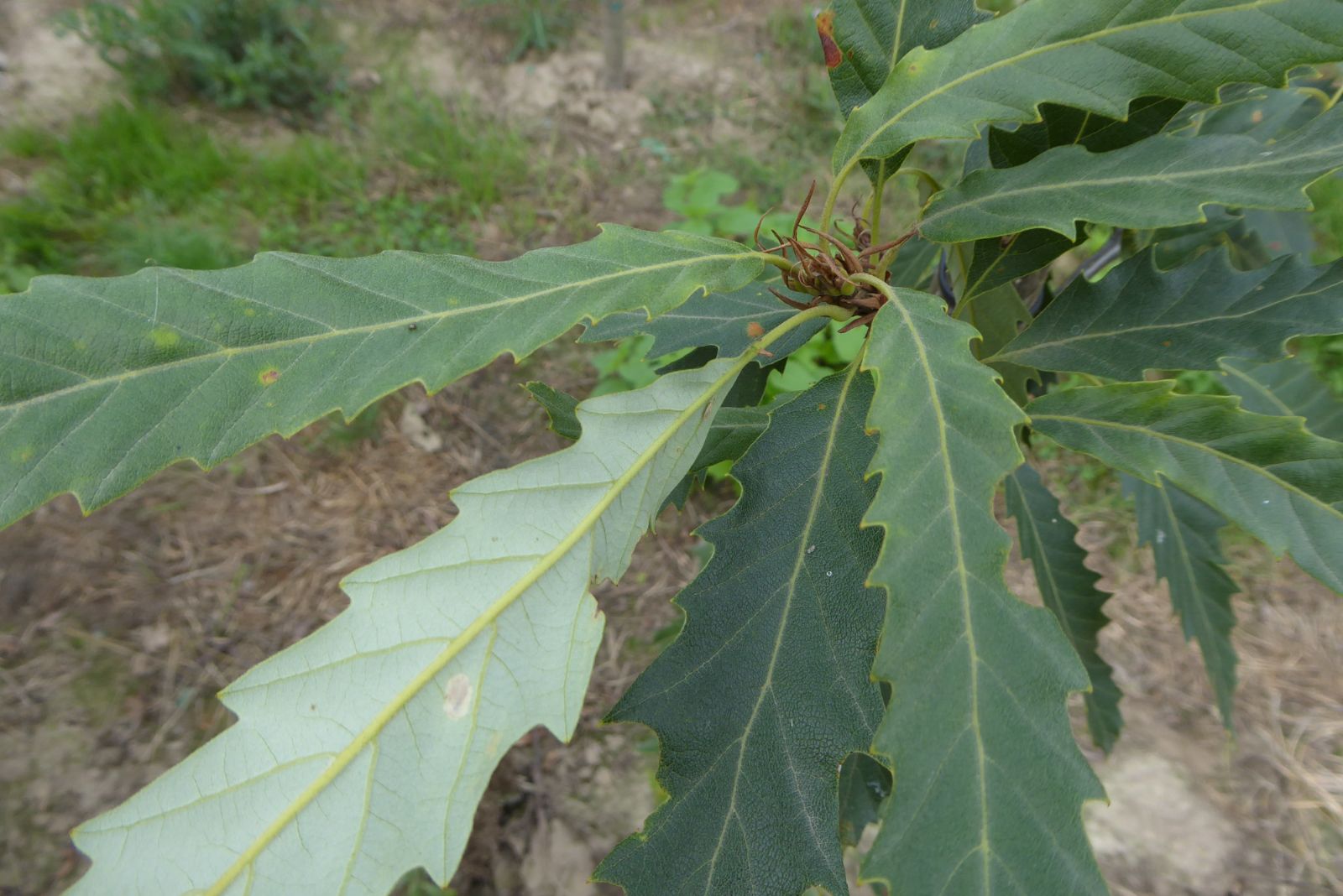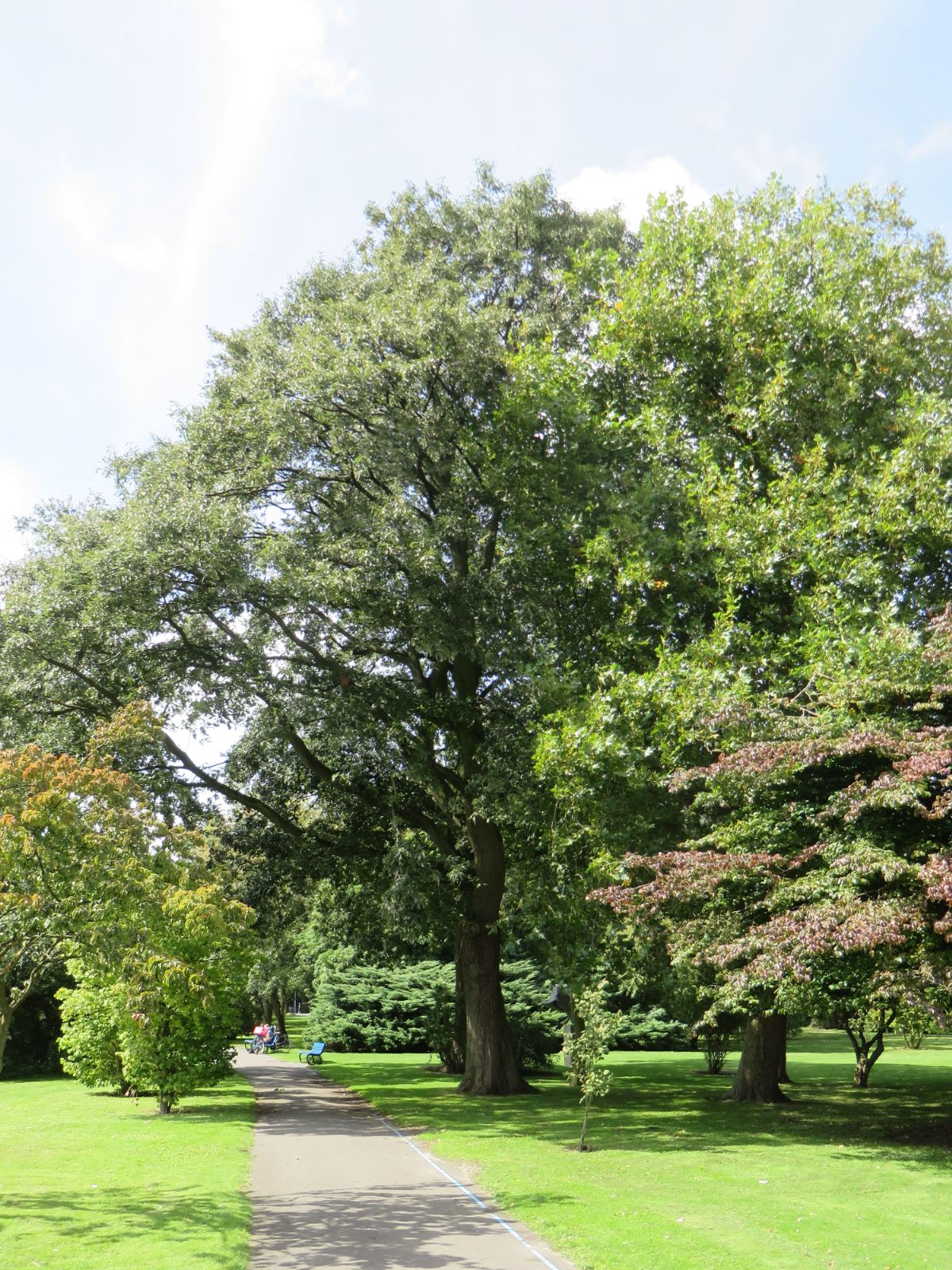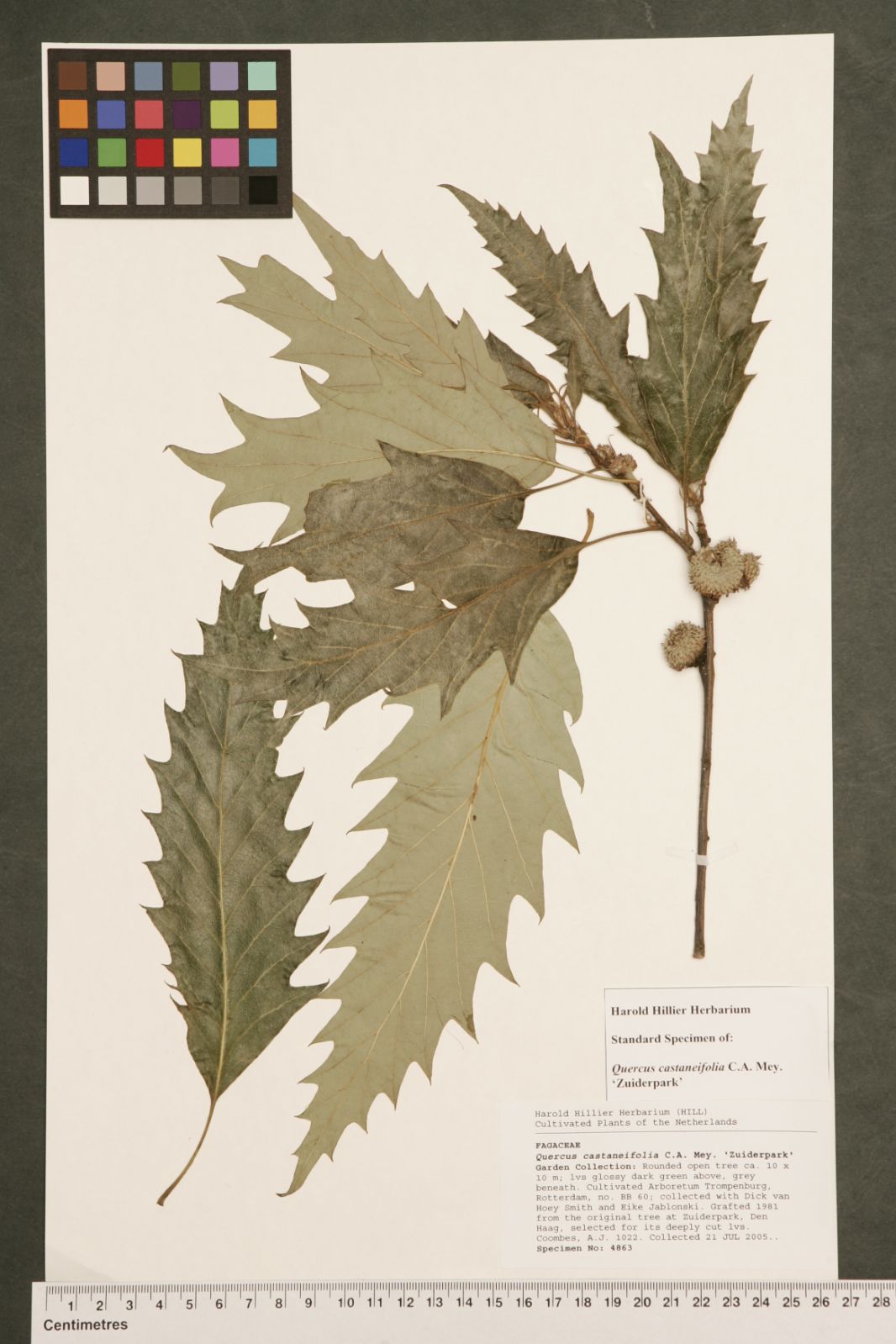Quercus castaneifolia
Sponsor
Kindly sponsored by
The Trees and Shrubs Online Oak Consortium
Credits
Allen Coombes & Roderick Cameron (2021)
Recommended citation
Coombes, A. & Cameron, R. (2021), 'Quercus castaneifolia' from the website Trees and Shrubs Online (treesandshrubsonline.
Genus
- Quercus
- Subgen. Cerris, Sect. Cerris
Common Names
- Chestnut-leaved Oak
- Persian Oak
Synonyms
- Quercus aitchisoniana A. Camus
- Quercus sintenisiana O. Schwarz
Infraspecifics
Other taxa in genus
- Quercus acerifolia
- Quercus acherdophylla
- Quercus acrodonta
- Quercus acuta
- Quercus acutifolia
- Quercus acutissima
- Quercus afares
- Quercus affinis
- Quercus agrifolia
- Quercus alba
- Quercus aliena
- Quercus alnifolia
- Quercus aquifolioides
- Quercus arizonica
- Quercus arkansana
- Quercus aucheri
- Quercus augustini
- Quercus austrina
- Quercus × auzendei
- Quercus baloot
- Quercus bambusifolia
- Quercus baronii
- Quercus bicolor
- Quercus brantii
- Quercus buckleyi
- Quercus canariensis
- Quercus canbyi
- Quercus candicans
- Quercus castanea
- Quercus cerris
- Quercus chenii
- Quercus chrysolepis
- Quercus coccifera
- Quercus cocciferoides
- Quercus coccinea
- Quercus conspersa
- Quercus crassifolia
- Quercus crassipes
- Quercus delavayi
- Quercus dentata
- Quercus deserticola
- Quercus dolicholepis
- Quercus douglasii
- Quercus dumosa
- Quercus durifolia
- Quercus eduardii
- Quercus ellipsoidalis
- Quercus emoryi
- Quercus engelmannii
- Quercus engleriana
- Quercus euboica
- Quercus eugeniifolia
- Quercus fabri
- Quercus faginea
- Quercus falcata
- Quercus floribunda
- Quercus frainetto
- Quercus franchetii
- Quercus fruticosa
- Quercus fusiformis
- Quercus gambelii
- Quercus garryana
- Quercus geminata
- Quercus georgiana
- Quercus germana
- Quercus gilliana
- Quercus gilva
- Quercus glabrescens
- Quercus glauca
- Quercus graciliformis
- Quercus gravesii
- Quercus griffithii
- Quercus grisea
- Quercus guyavifolia
- Quercus hartwissiana
- Quercus hemisphaerica
- Quercus × hispanica
- Quercus hondae
- Quercus hypargyrea
- Quercus hypoleucoides
- Quercus ilex
- Quercus ilicifolia
- Quercus imbricaria
- Quercus incana
- Quercus infectoria
- Quercus insignis
- Quercus ithaburensis
- Quercus kelloggii
- Quercus × kewensis
- Quercus kiukiangensis
- Quercus laceyi
- Quercus laevis
- Quercus lamellosa
- Quercus lanata
- Quercus lancifolia
- Quercus laurifolia
- Quercus laurina
- Quercus × leana
- Quercus leucotrichophora
- Quercus × libanerris
- Quercus libani
- Quercus lobata
- Quercus lobbii
- Quercus lodicosa
- Quercus longinux
- Quercus longispica
- Quercus look
- Quercus × ludoviciana
- Quercus macranthera
- Quercus macrocalyx
- Quercus macrocarpa
- Quercus macrolepis
- Quercus marilandica
- Quercus mexicana
- Quercus michauxii
- Quercus mongolica
- Quercus monimotricha
- Quercus montana
- Quercus morii
- Quercus muehlenbergii
- Quercus myrsinifolia
- Quercus myrtifolia
- Quercus nigra
- Quercus × numidica
- Quercus oblongifolia
- Quercus obtusata
- Quercus oglethorpensis
- Quercus oxyodon
- Quercus pagoda
- Quercus palmeri
- Quercus palustris
- Quercus pannosa
- Quercus parvula
- Quercus petraea
- Quercus phellos
- Quercus phillyreoides
- Quercus planipocula
- Quercus poilanei
- Quercus polymorpha
- Quercus pontica
- Quercus prinoides
- Quercus pubescens
- Quercus pyrenaica
- Quercus rehderiana
- Quercus reticulata
- Quercus robur
- Quercus rotundifolia
- Quercus rubra
- Quercus rugosa
- Quercus rysophylla
- Quercus sadleriana
- Quercus salicina
- Quercus sartorii
- Quercus × schneideri
- Quercus schottkyana
- Quercus semecarpifolia
- Quercus senescens
- Quercus serrata
- Quercus sessilifolia
- Quercus setulosa
- Quercus shumardii
- Quercus sinuata
- Quercus spinosa
- Quercus stellata
- Quercus stenophylloides
- Quercus suber
- Quercus subspathulata
- Quercus tarokoensis
- Quercus tatakaensis
- Quercus texana
- Quercus tomentella
- Quercus trojana
- Quercus tungmaiensis
- Quercus turbinella
- Quercus × turneri
- Quercus undulata
- Quercus utahensis
- Quercus utilis
- Quercus uxoris
- Quercus variabilis
- Quercus velutina
- Quercus virginiana
- Quercus vulcanica
- Quercus warburgii
- Quercus wislizenii
- Quercus xalapensis
Deciduous or semi-evergreen tree (leaves fall at the end of winter), usually 25–30 m tall in cultivation, up to 50 m in the wild, trunk to 2 m dbh, old trees can develope a buttressed trunk, habit spreading and regular, forming a rounded crown in the open; bark grey and smooth at first, later dark brown, becoming deeply fissured, slightly corky within ridges, similar to Q. cerris; shoots covered with grey hairs when young, becoming glabrous, with numerous white lenticels, branches somewhat warty; buds ovoid, brown, with linear, persistent stipules. Leaves narrowly elliptical, oblong-lanceolate, 7–20 cm long × 2.5–7 cm wide, sometimes larger, base wedge-shaped, rarely rounded, taper-pointed at the apex, margin with 8–12 large, regular, sharp teeth, or sometimes merely wavy with large, blunt teeth, generally mucronate or aristate; sinuses rounded; leaves widest at middle of blade or in apical third; leaves emerge covered in white or greyish hairs, the upper surface turning shiny, dark green and glabrous (sometimes a few scattered hairs persist); lower surface with whitish, yellowish, or greyish green tomentum, becoming green and glabrous at season’s end; 6–15 secondary veins, prominent on lower surface, extend to the short mucronate tips of the teeth; petiole pubescent, 1–2.5 cm long. Cupules hemispherical, 2.5–3 cm long and wide, enclosing between a third and half of the acorn, scales long (up to 0.6 cm), reflexed, pointed, linear, and leathery, covered in whitish or greyish tomentum, interior of cup silky. Acorns 2.8–4 cm long × 1.5–2 cm broad, apex mucronate and silky; solitary or in clusters of 2 or 3, glabrous, sessile or on a very short peduncle, oblong-elliptical, ripening in the second year. (le Hardÿ de Beaulieu & Lamant 2010; Rix & Krikham 2009; Coombes 2017).
Distribution Azerbaijan Georgia Iran North (Talysh and Elburz Mountains) Russia Dagestan
Habitat Humid forests, usually on north-facing slopes, from sea level to 2100 m. At lower altitudes the trees form woodland; at higher altitude they appear as scattered specimens. Associated with Parrotia persica, Acer velutinum, Gleditsia caspica, Alnus subcordata, and Pterocarya fraxinifolia.
USDA Hardiness Zone 6
RHS Hardiness Rating H7
Conservation status Near threatened (NT)
Taxonomic note A. Camus recognized Q. castaneifolia subsp. aitchisoniana, based on a specimen at Kew from seed collected by James Aitchison in 1885. It was distinguished by its flatter cupule scales, which may be spreading or appressed, but this character has been found to be scattered throughout the species’ range (Rix & Kirkham 2009). In 1967, Djavanchir-Khoie described six new subspecies and varieties, but molecular analysis indicated that differences at the molecular level were not enough to distinguish among proposed intraspecific taxa. The current view is that Q. castaneifolia is a single polymorphic and highly variable species (Zale 2018).
Chestnut-leaf Oak is a narrow endemic, occurring around the southern and south-eastern coast of the Caspian Sea, in ancient humid woodlands known as Hyrcanian Forests (from the Greek name of this area in northern Iran). It has long been said to be rare in cultivation in the UK and Ireland (e.g. Bean 1976; Royal Botanic Gardens, Kew 2020), though several gardens now hold mature specimens. The Tree Register (2020) lists 62 trees, of which 21 have a dbh of 2 m or more. The champion stands in Kew, one of the iconic oaks of the collection, grown from seed received in 1843 and planted in 1846, probably by William Hooker (Rix & Kirkham 2009). In 2017 it was 36.6 m tall × 2.52 m dbh (Tree Register 2020). Kew also has a smaller tree grown from seed collected by James Aitchison near Asterabad, Iran, in 1885 (see Taxonomic Note above). Its slow growth may be due to the fact that it grows in a very dry part of the garden (Rix & Kirkham 2009).
As a mature specimen tree, this species can be an outstanding feature in a garden. It often forms a distinctly rounded canopy, with a spreading structure devoid of a strong central leader. The branching habit, however, is variable, and trees with a dominant central leader are also found. Leaves turn colour late in autumn, in shades of clear yellow and brown (Zale 2018).
A high degree of polymorphism has been observed in trees in cultivation. At Leigh Delamere House, Wiltshire, UK, three trees grown from seed collected from a single tree in a low-altitude forest in Iran in 2002 have leaves that vary from standard Q. castaneifolia shape to something closer to Q. cerris, suggesting hybridization with that species. However, as these two species do not overlap, the accepted view is that this variation is normal for Chestnut-leaved Oak. Menitsky (2005) commented that leaf forms on shoots arising from the trunk can be similiar to varieties of Q. cerris, while Camus (1936) noted that forms with deeper sinuses and obtuse rather than acute teeth are often found in low-altitude forests (MacEwen & Chassé 2015; Snyers 2014). James Harris (2017) has also noted two distinct forms in cultivation, one with sharply pointed lobes and another with rounded lobes and small, mucronate teeth.
Aside from the champion at Kew, several impressive Chestnut-leaved Oaks grow in the UK and Ireland, notably at Beauport Park, Hastings, England (29 m × 1.7 m in 2014) and at Batsford Arboretum, Gloucestershire, England (29 m × 1.3 m in 2014) (Tree Register 2020). Challengers are also to be found in Europe: a tree in Arboretum Tervuren, Belgium reached 34.8 m × 1.15 m in 2012 and another at Arboretum Groenendaal, Belgium measured 34.6 m × 1.05 m in 2011 (monumentaltrees.com 2020). At Arboretum du Passadou, France, a tree was estimated at about 30 m tall in 2019 (pers. obs.) Trees in the wild attain greater size: Josef Souček (2018) describes trees growing at low altitude along the shores of the Caspian Sea that exceed 50 m in height and 3 m dbh, and Alireza Naqinezhad came across a gigantic tree in the Hyrcanian forest that meausured 60.4 m × 4.9 m dbh, with a circumference at the base of almost 22 m, due to wide root flare (A. Naqinezhad, pers. comm. 2021) .
The species has earned something of a reputation as an oak of easy virtue, with a particularly soft spot for Q. cerris. Rix and Kirkham (2009) report that seed collected from a specimen at Kew produced seedlings that mostly (80%) bore foliar attributes of Q. cerris. There are two trees of this hybrid at Sir Harold Hillier Gardens, the larger of which measured 13.4 m × 44 cm in 2019, at an age of around 22 years (Royal Botanic Garden Edinburgh 1997). The hybrid has also been raised at Kew where there are three trees recorded (Royal Botanic Gardens, Kew 2020). Hybrids with Q. libani have also been reported (Oak Names Database 2020; Royal Botanic Garden Edinburgh 1997) and a 15 m tree grown as Q. libani but suspected to be of this parentage was found at Arboretum de Versailles-Chèvreloup, France in 1998 by Allen Coombes. The reputation may be unfair, as available seed of Q. castaneifolia is mostly from cultivated specimens growing in isolation and surrounded by other section Cerris suitors. Also, as noted above, leaf forms similar to Q. cerris may occur within Q. castaneifolia variation so may not necessarily be evidence of hybridization. It is certainly true that a group of trees grown at Shields Oak Grove at the University of California, Davis, from seed obtained from Kew’s original tree in 1965, display intermediate features and their progeny show leaf variation typical of Q. cerris, with little resemblance to Q. castaneifolia – so much so as to suggest highly unlikely crossing with Q. macrocarpa growing nearby (Muffly 2020). A tree at the Arnold Arboretum received as Q. castaneifolia in 1938 also appears to be a hybrid with Q. cerris. At Windsor Great Park, England, two of the ‘Empire Oaks’ (Australia and New Zealand), planted in 1937 belong to the Q. castaneifolia × cerris hybrid. They were 28 m × 100 cm and 23 m × 77 cm dbh respectively in 2010. At Hergest Croft, England, two trees planted in 1920 were 29 m × 89 cm and 29 m × 80 cm dbh in 2013 (Tree Register 2020). A tree of this hybrid was about 12 m tall at Arboretum du Passadou, France in 2019 (pers. obs.). Bob Berry reported that at Hackfalls Arboretum in New Zealand, Q. castaneifolia did not grow as vigorously as other oaks, and that a hybrid with Q. cerris grew much better. He suggests that Chestnut-leaved Oak may not be suited to Southern Hemisphere conditions and that selecting seedling backcrosses from the hybrid may be a better way of growing trees with Q. castaneifolia genetics in that part of the world (Berry 2016). This has not been the case at Grigadale Arboretum in Argentina, however, where a Q. castaneifolia has reached a height of 15.2 m in 21 years (Grigadale Arboretum 2020).
Q. castaneifolia was collected by Ann Ala and Roy Lancaster in northern Iran in 1972 (Ala & Lancaster 25). Of three plants from this collection at Sir Harold Hillier Gardens, UK, the largest was 25 m × 53 cm in 2015 (Tree Register 2020). A specimen from this collection also grows at the Cambridge Botanical Garden, where it has reached 18.5 m × 68 cm (P. Atkinson, pers. comm. 2020). Due to the unusually deep lobing on the leaves of this collection it was a originally believed to be a hybrid with Q. macranthera. The species was reintroduced to Kew by Fliegner and Simmons in 1977 from the Alborz (Elburz) mountains of Iran (Royal Botanic Gardens, Kew 2020).
It is occasionally planted in the USA, but plants from wild source are not common. It was introduced to Longwood Gardens in 1957. The seed had been collected by Howard Scott Gentry in September 1955 from a spreading tree 30 ft tall, 54 miles east of Gorgan, NE Iran (Gentry 15799) and was grown at the US Plant Introduction Station, Maryland. In 2016, the specimen at Longwood Gardens (which was unidentified until recently) was 15.5 m tall with a canopy 21.9 m wide, and had a dbh of 112.5 cm (Zale 2018).
Zale (2018) also reported that chestnut-leaved oak is widely cultivated tree in the Lankaran Region of Azerbaijan, where it is used for windbreaks and as a street tree very tolerant of heat, drought, and neglect. Several trees grow at the Jerusalem Botanical Gardens (The Jerusalem Botanical Gardens 2021).
The species was described in 1831. The epithet refers to the similarity of the leaves to those of chestnuts (genus Castanea).
'Green Spire'
Awards
RHS Award of Garden Merit (1993)
RHS Hardiness Rating: H7
Raised about 1948 by Hillier Nurseries, this has an upright habit, vase-shaped with age with numerous ascending branches. It reached 21 m × 68 cm dbh at Sir Harold Hillier Gardens in 2017. At Cannizaro Park, Wimbledon, England it was 21 m × 70 cm dbh in 2020 (Tree Register 2020). A tree at Hemelrijk, Belgium, has a larger girth, reaching a dbh of 85 cm in 2019, but it suffered storm damage in 2017 (Arboretum Wespelaar 2018).
'Zuiderpark'
A form with leaves to 22 cm long × 8 cm wide and more deeply cut teeth. A specimen at Arboretum Trompenburg, the Netherlands, propagated from the original, is a spreading tree about 10 m × 10 m (2005) with glossy dark green leaves, grey beneath (Coombes & Jablonski 2006). The original tree, planted about 1926 at Zuiderpark, Den Haag, Netherlands was 19.6 × 1.13 m dbh (at 1.3 m) in 2021 (monumentaltrees.com 2021).


